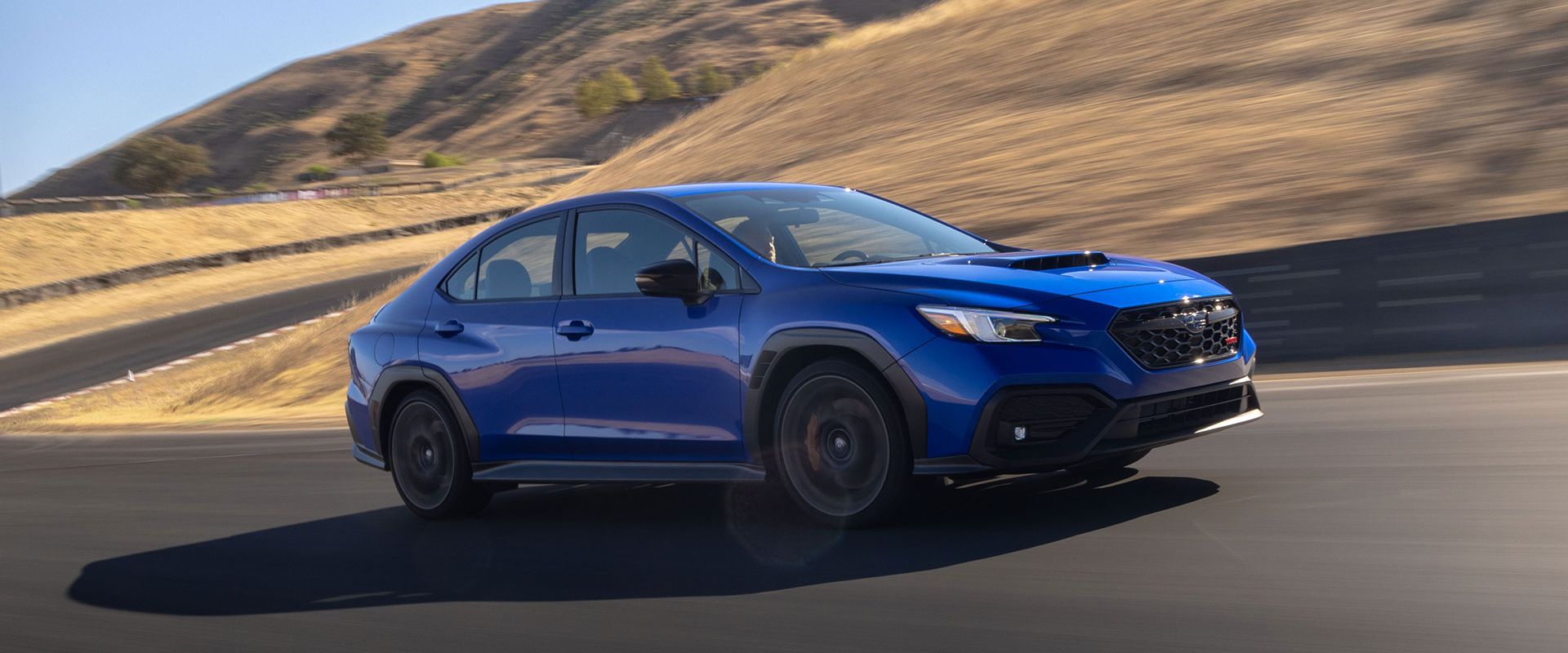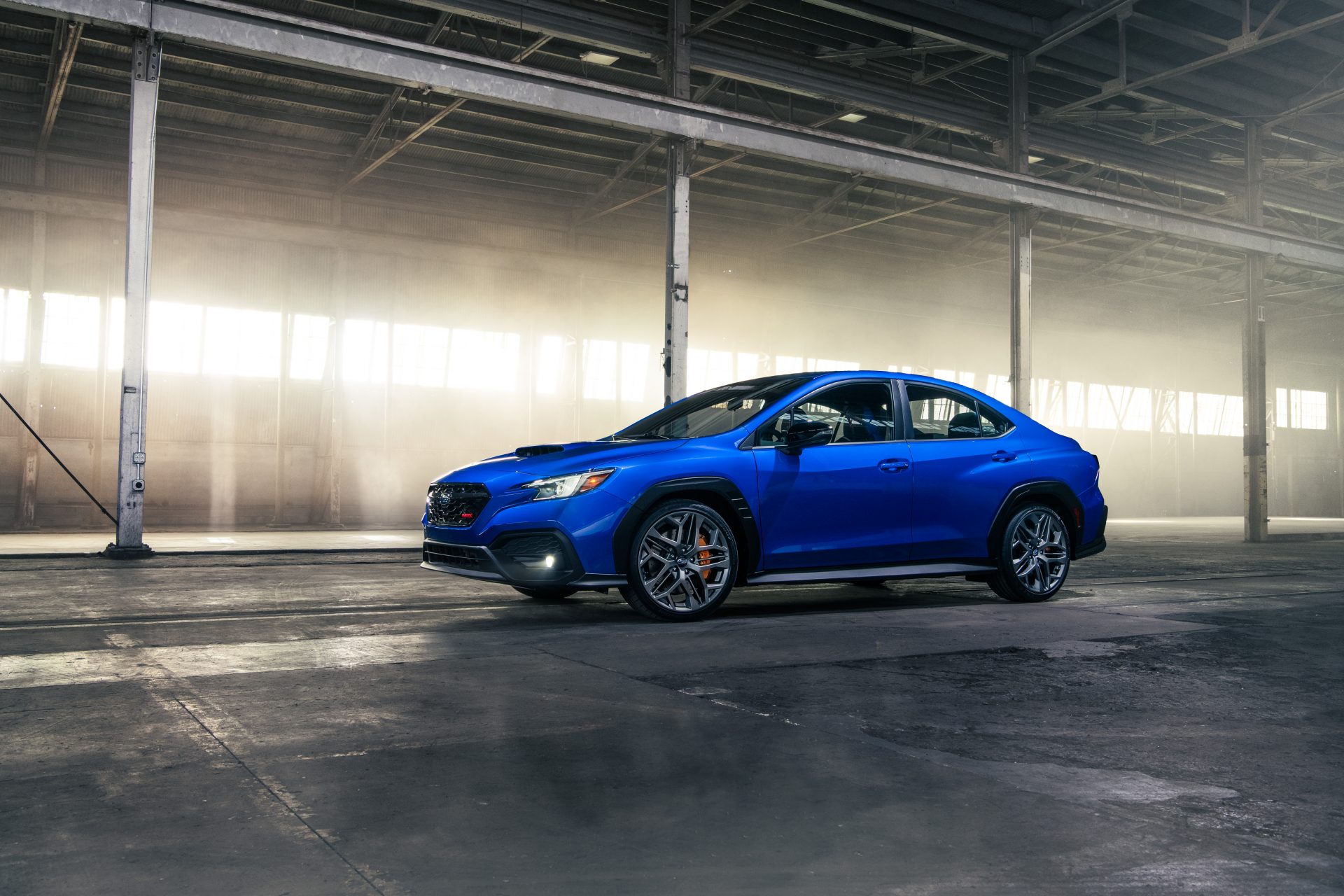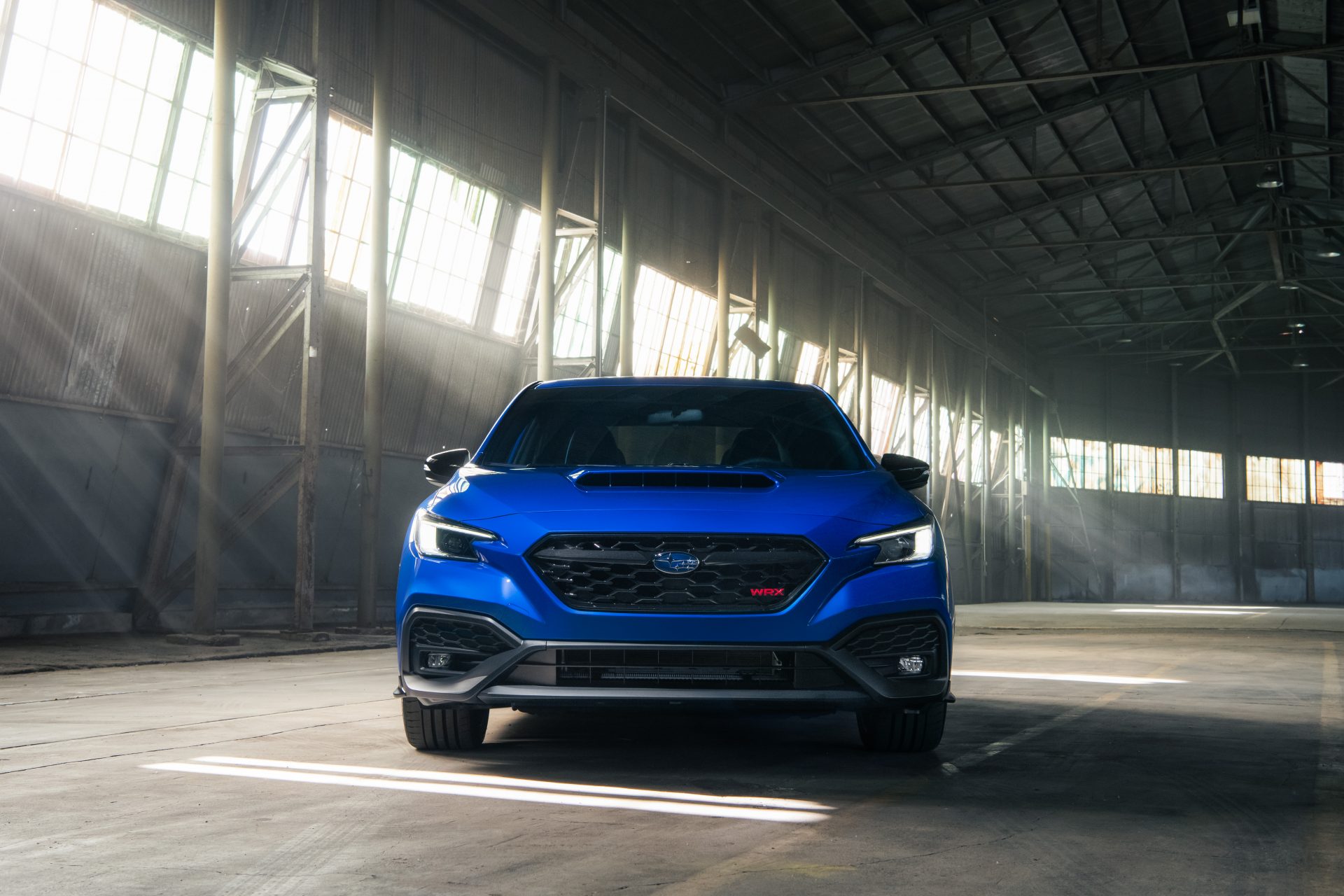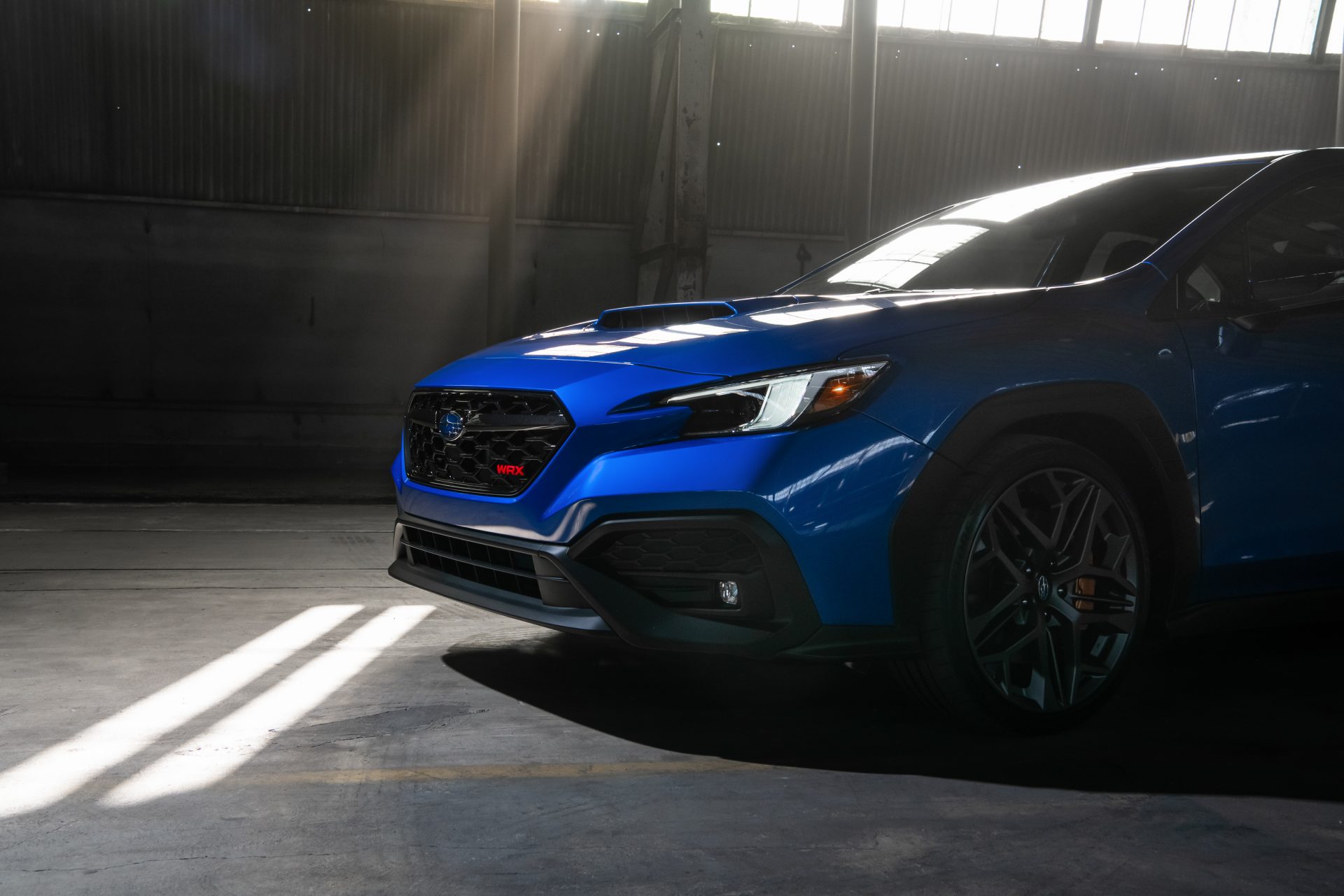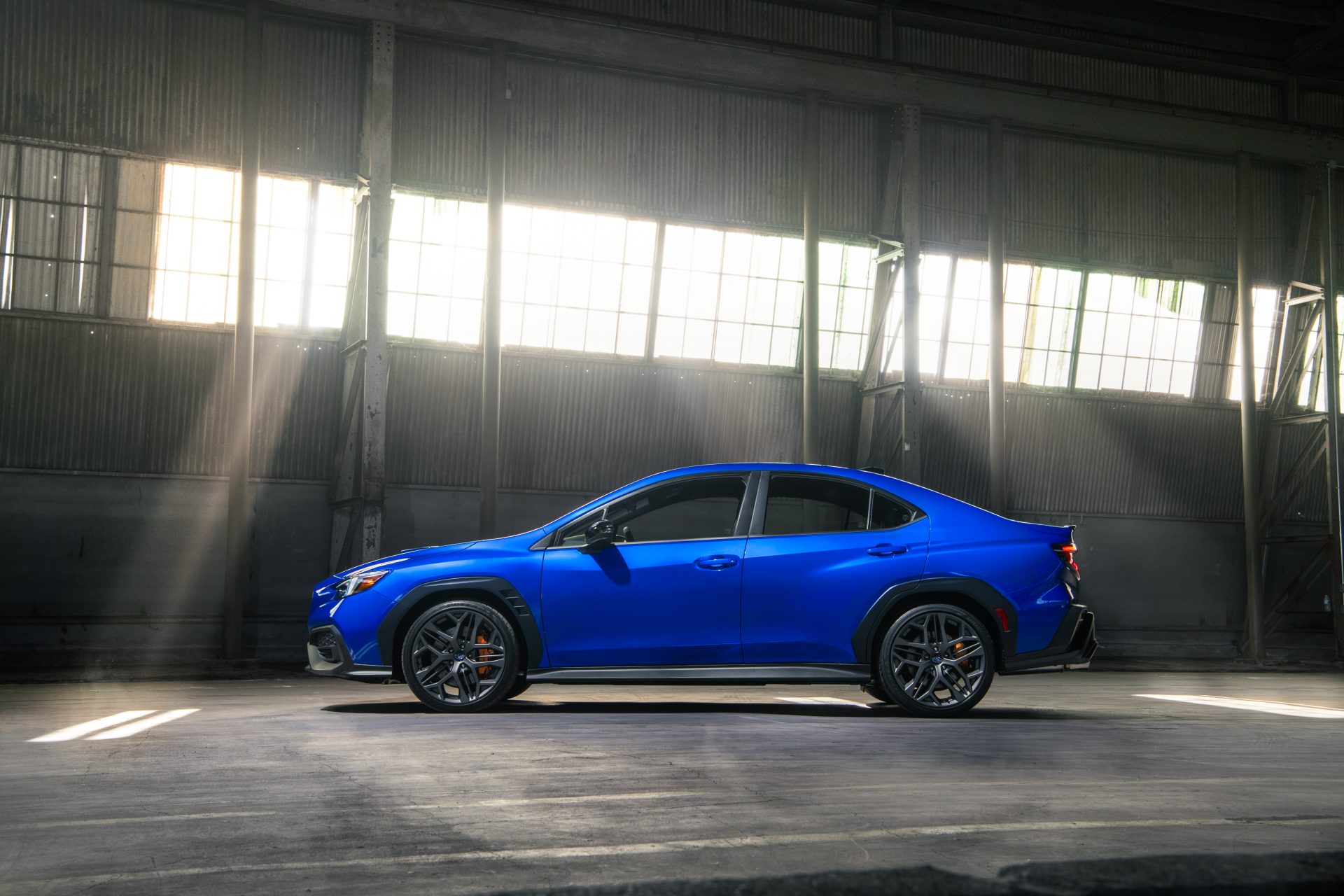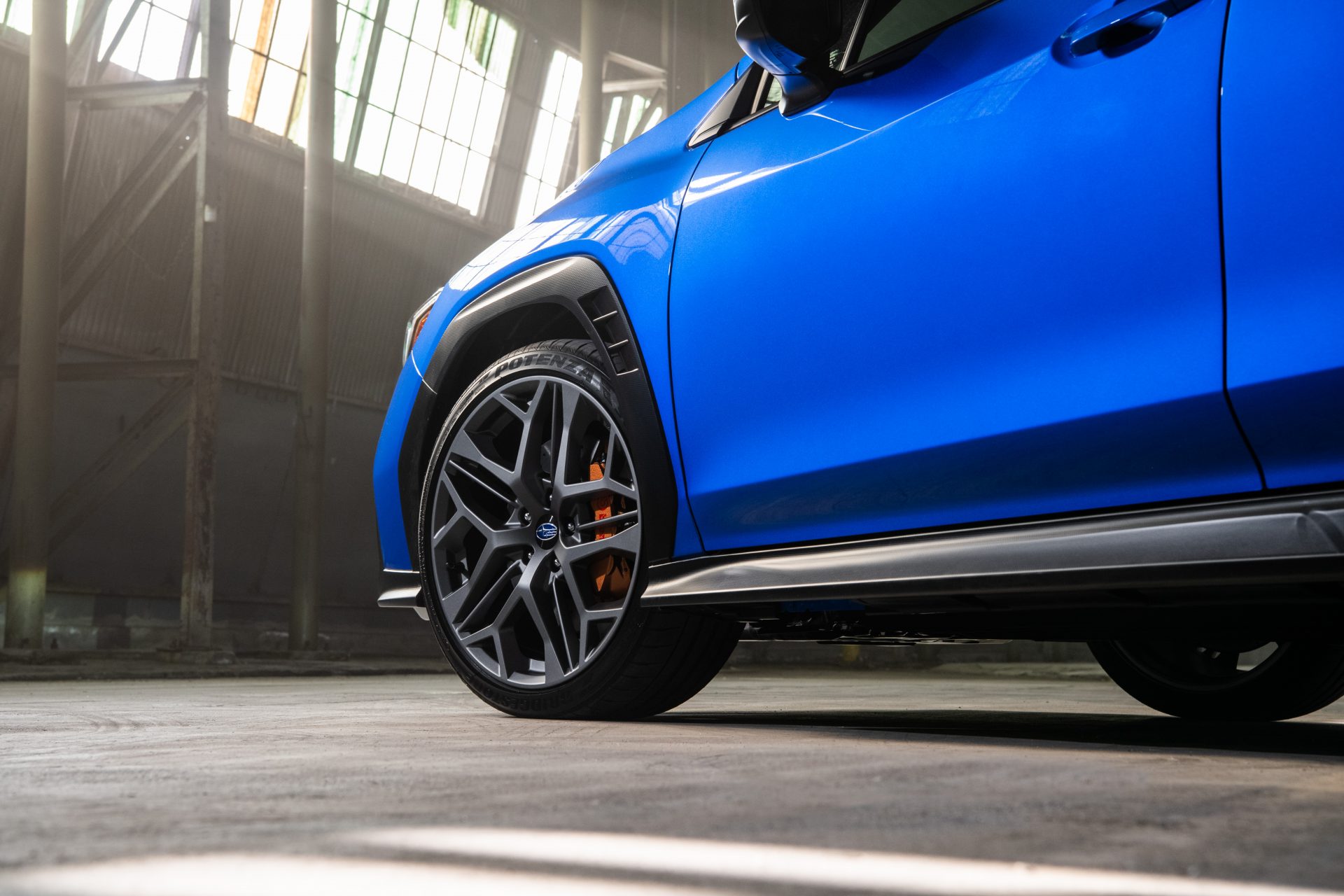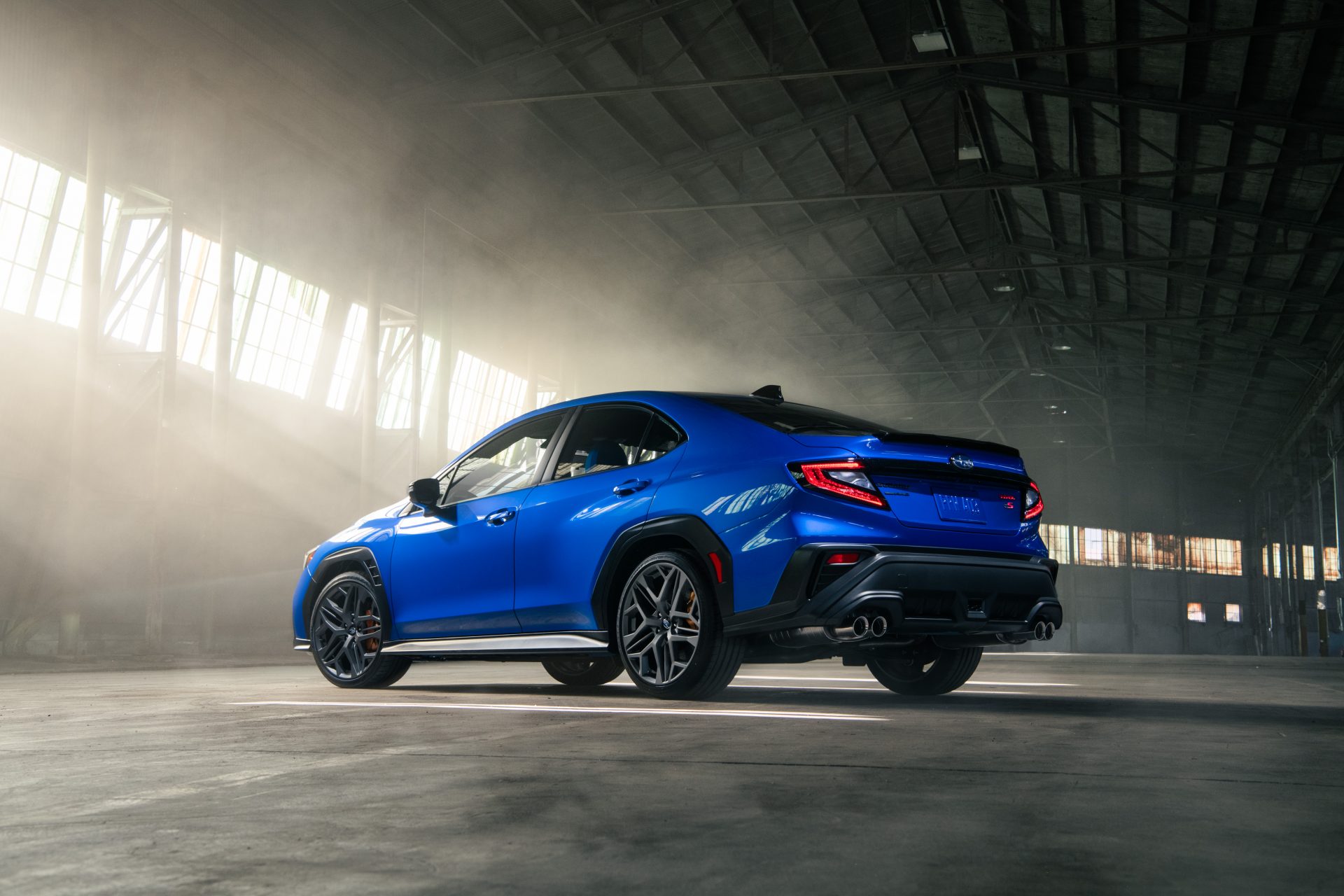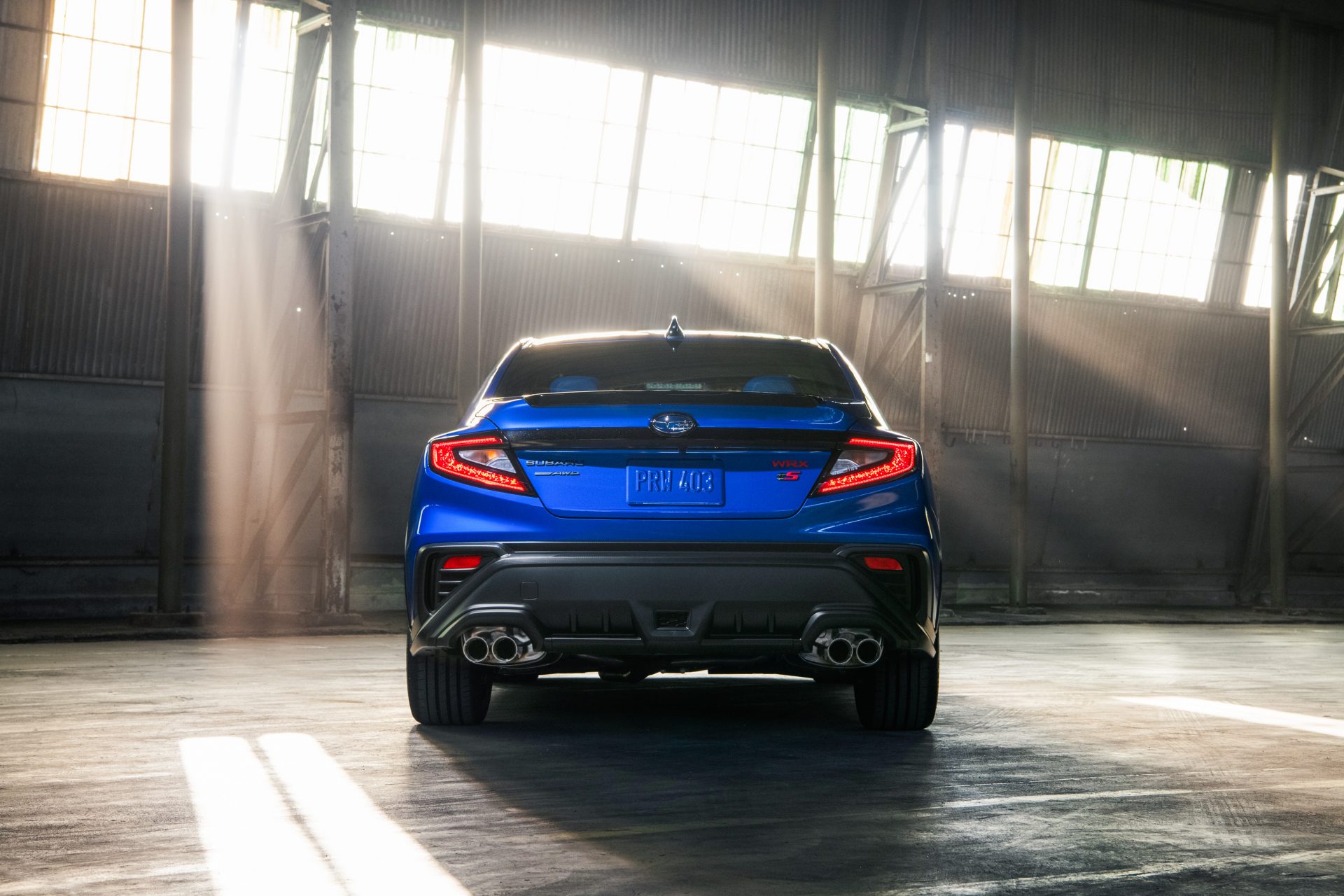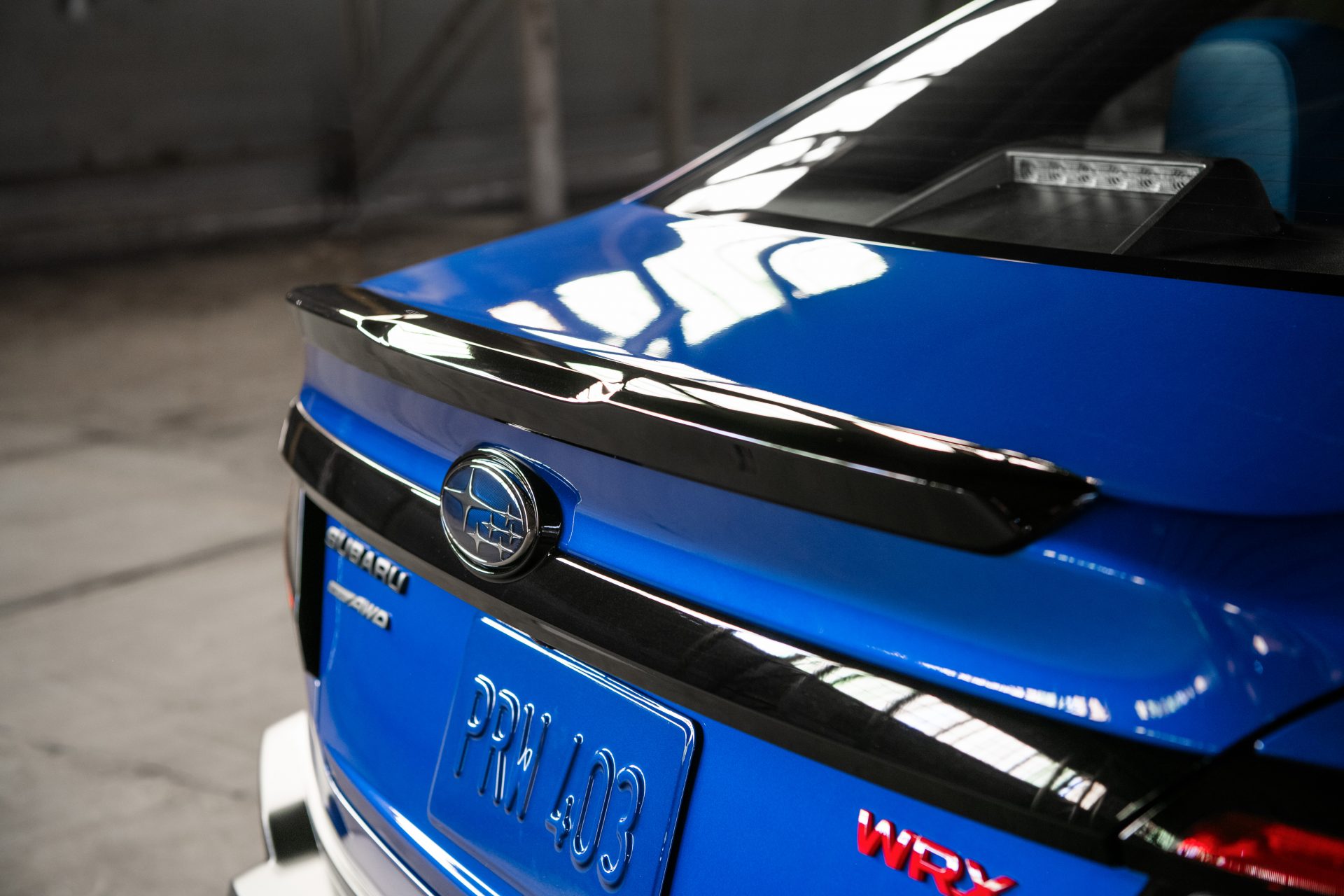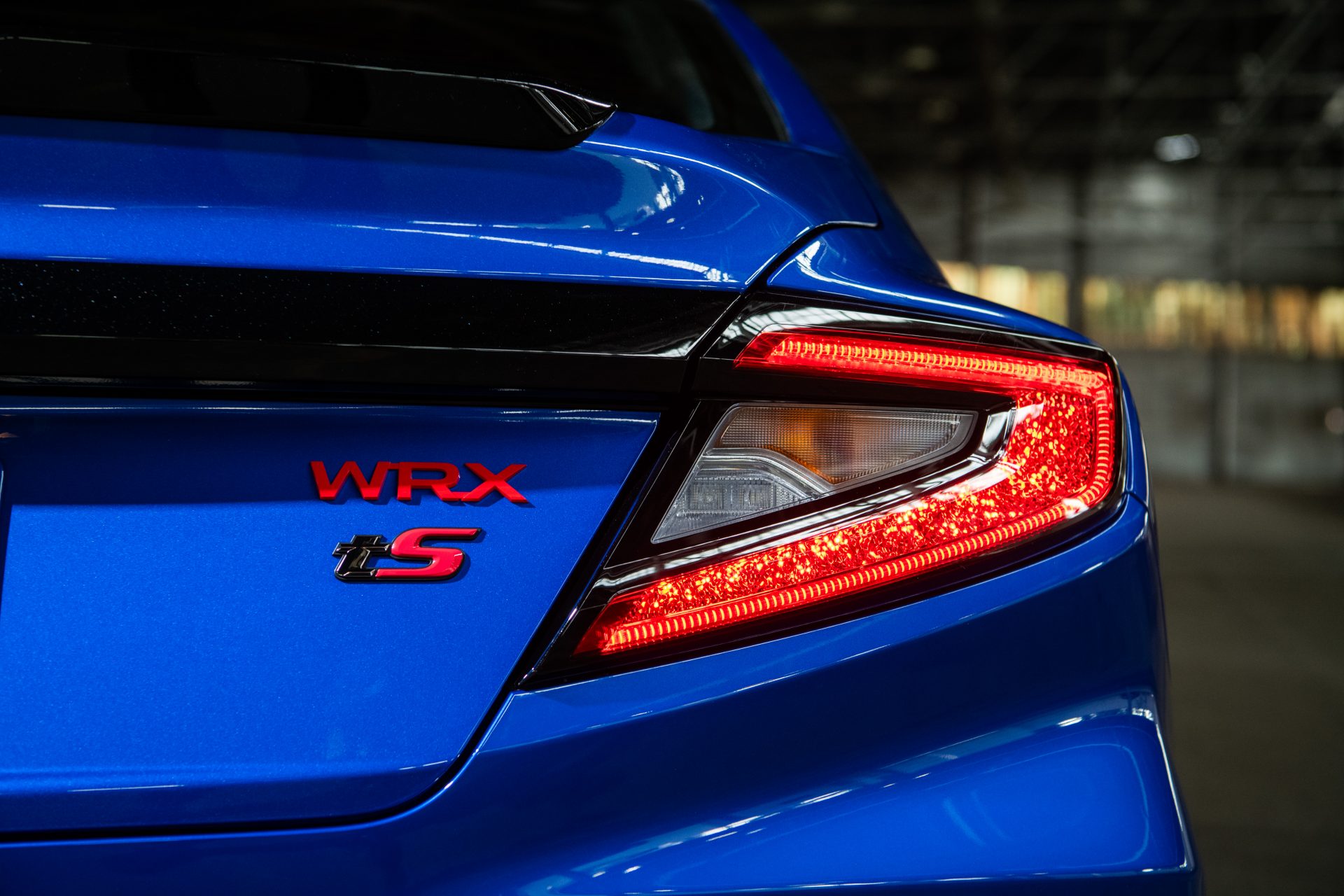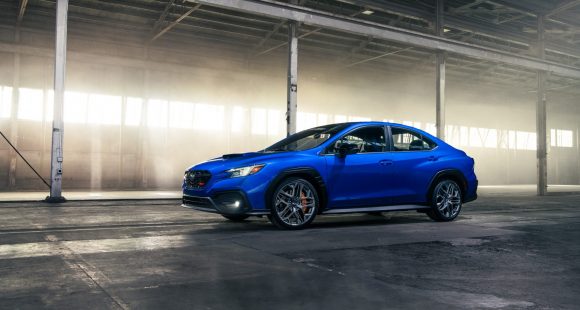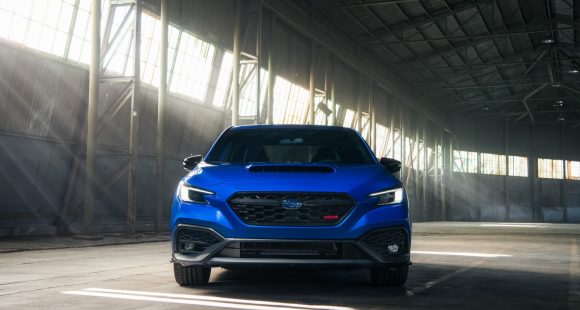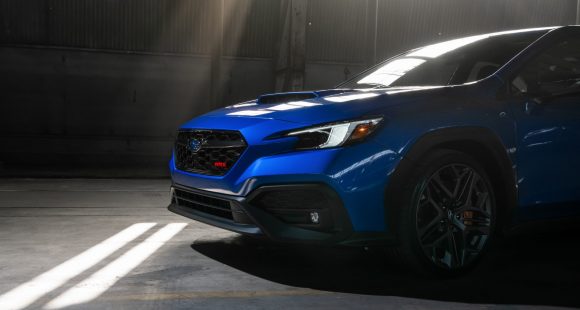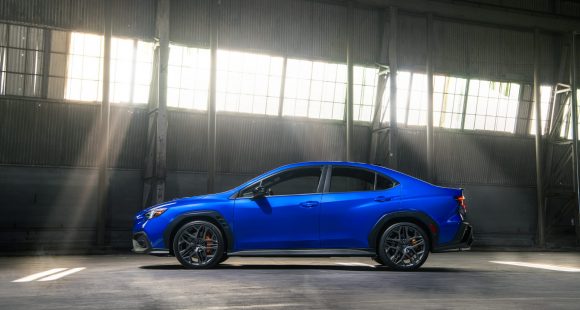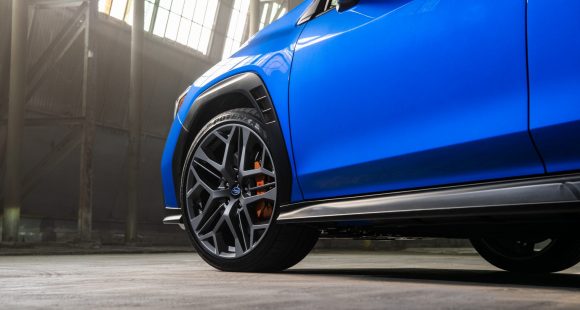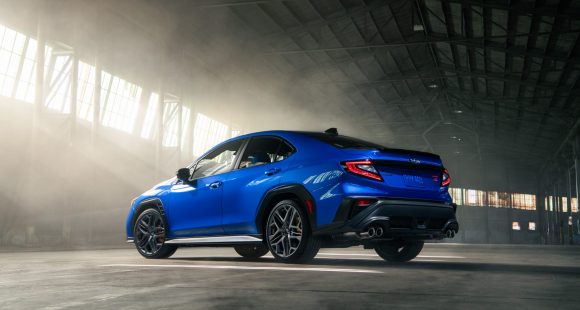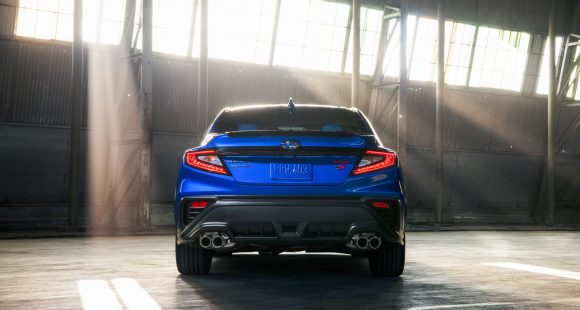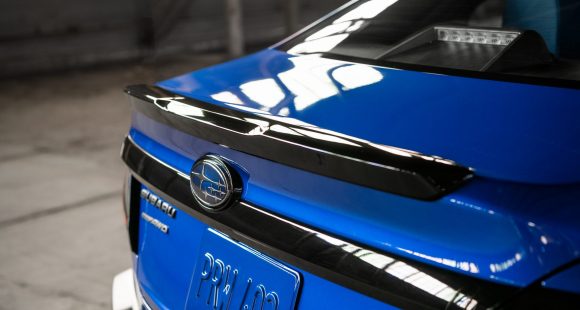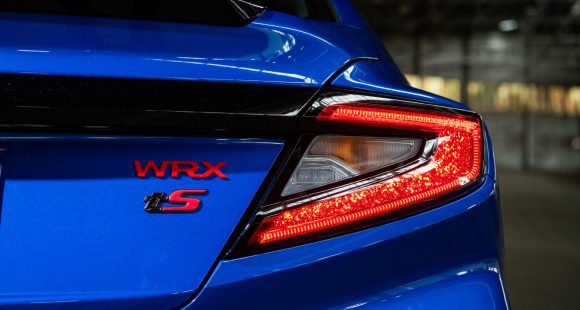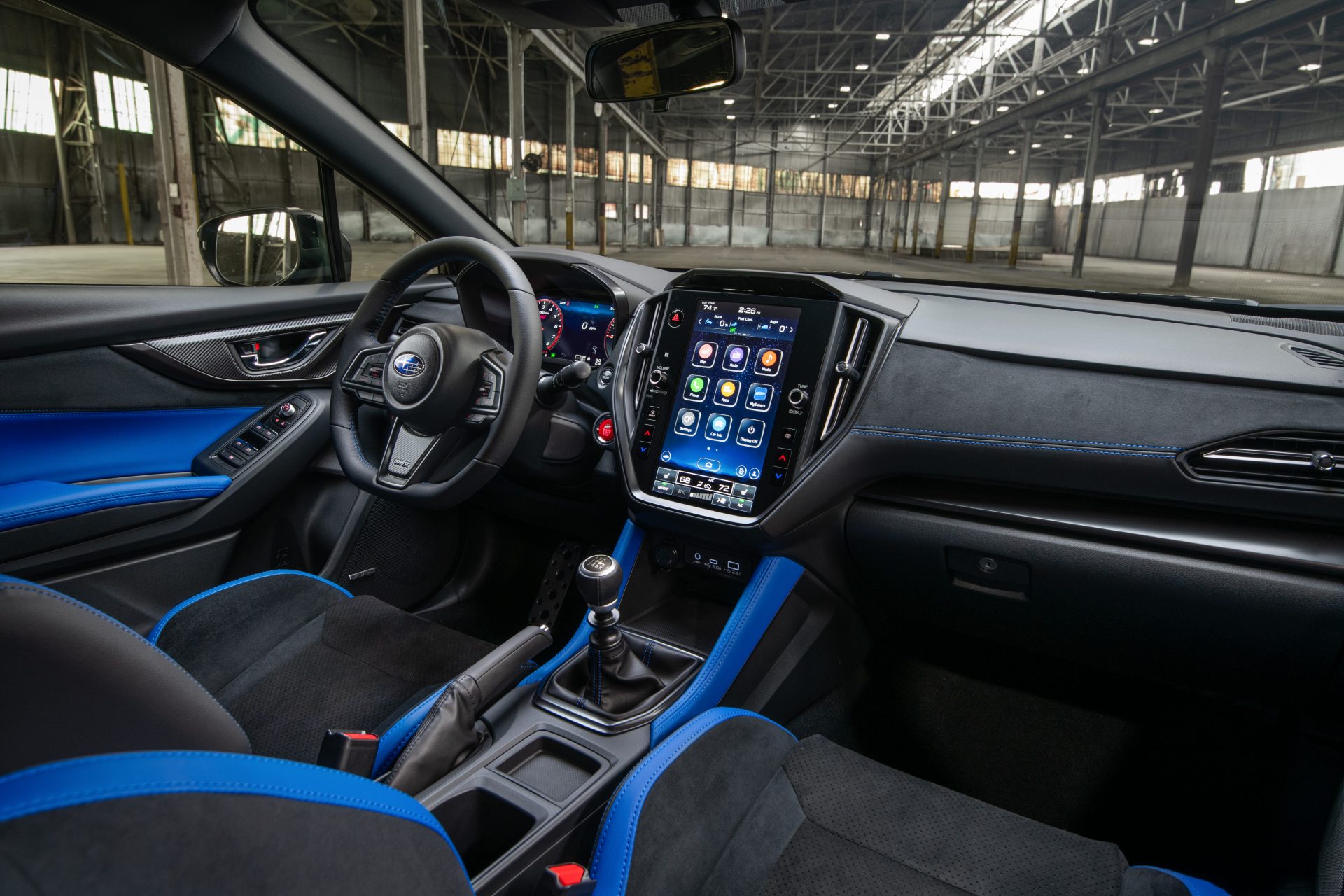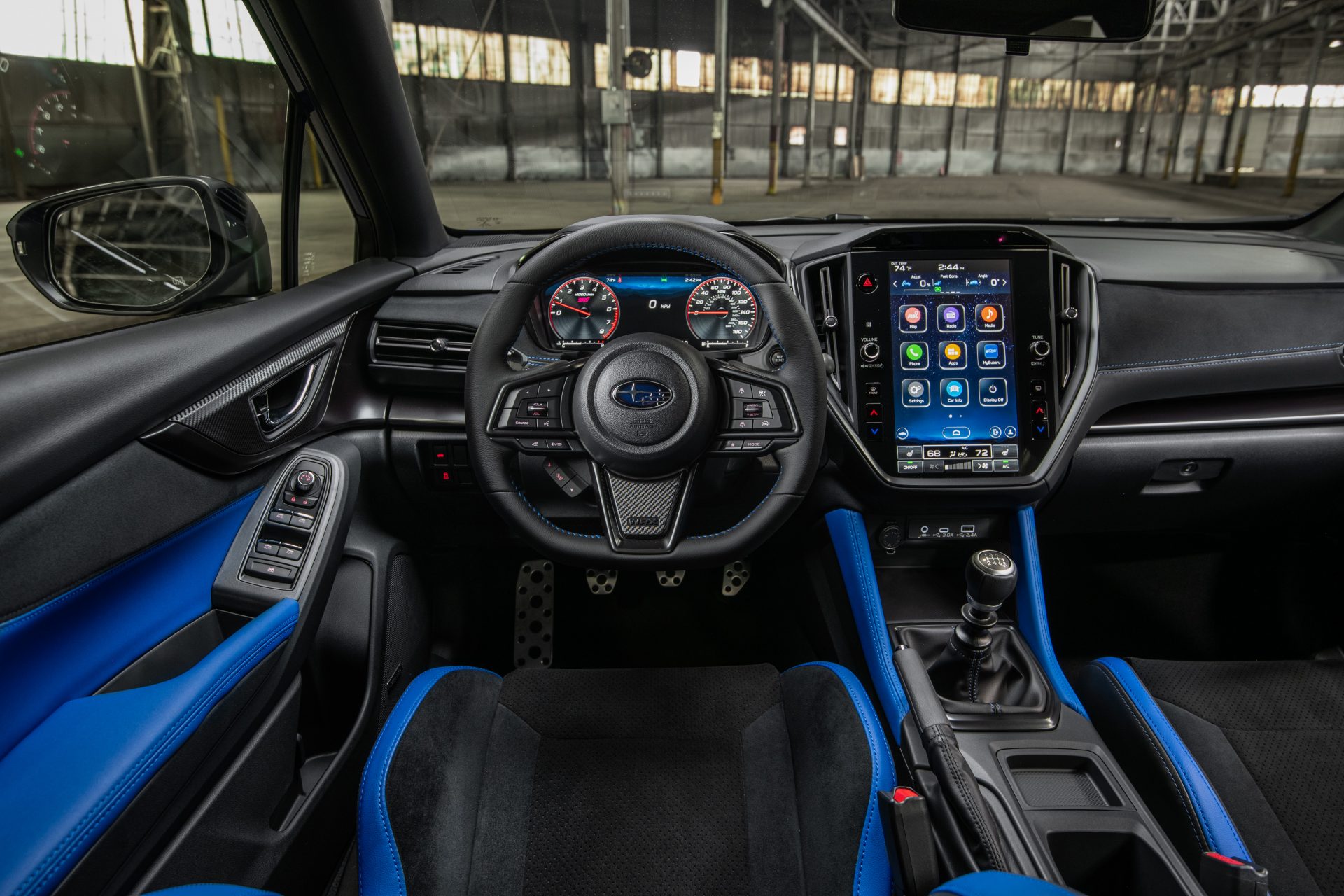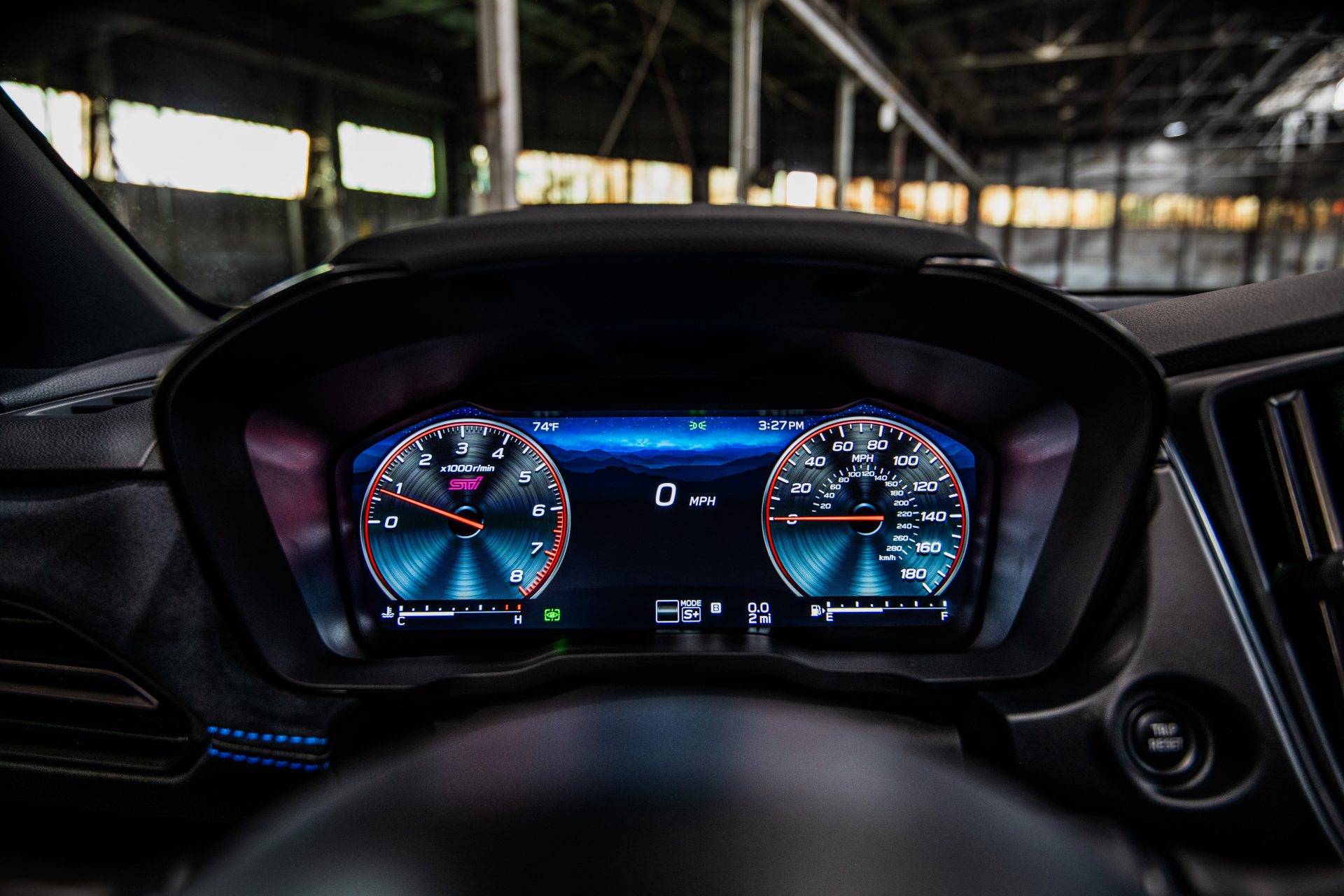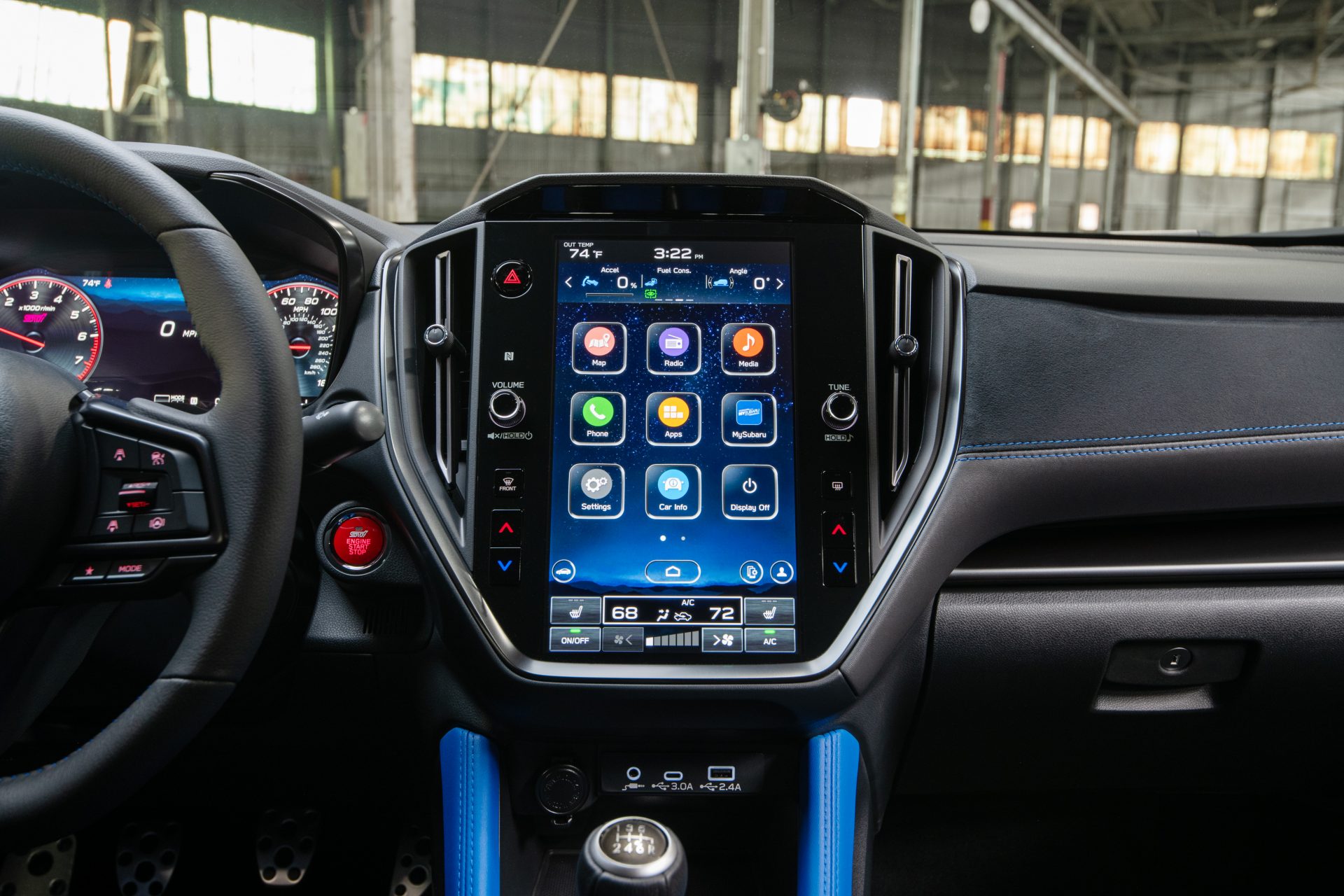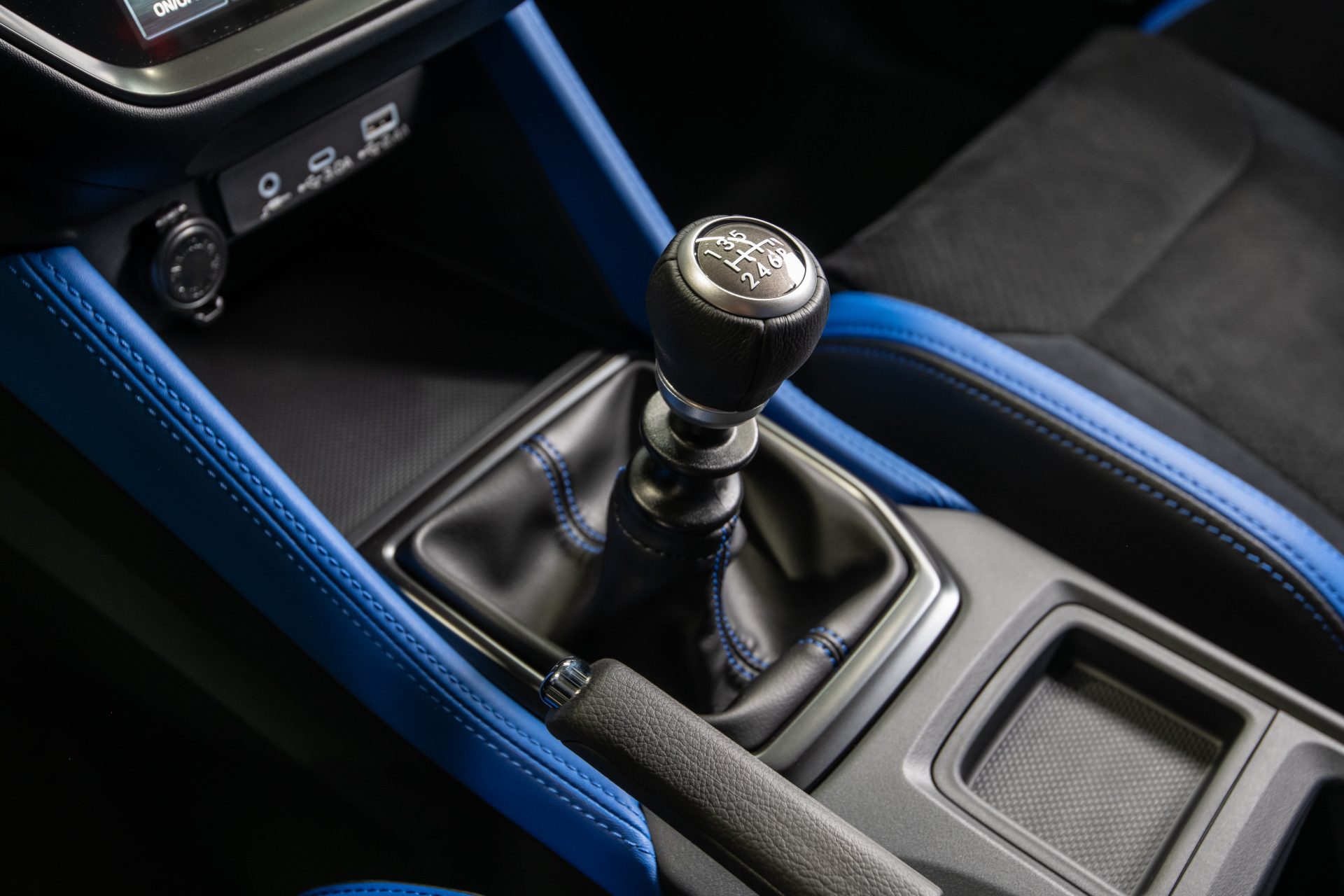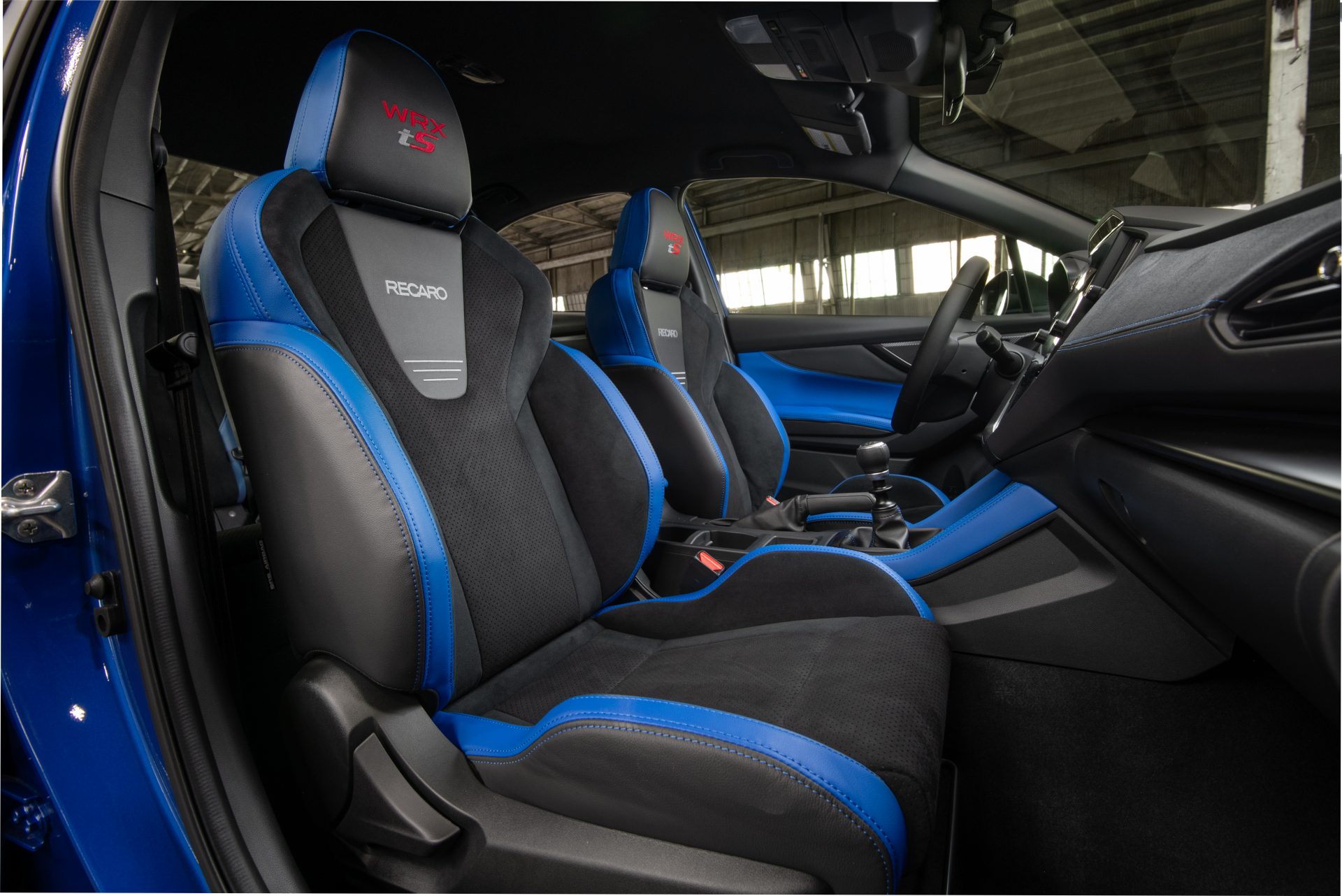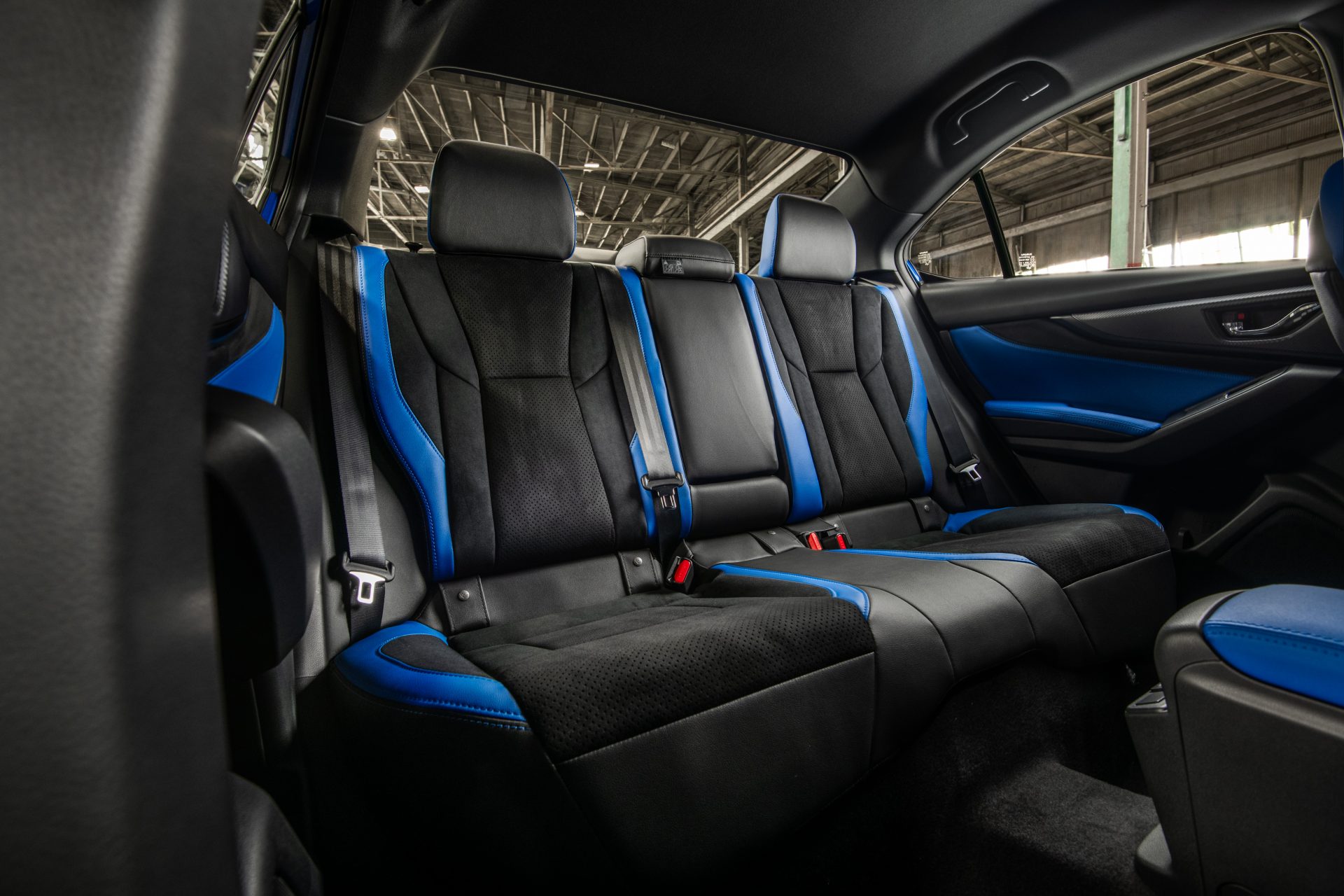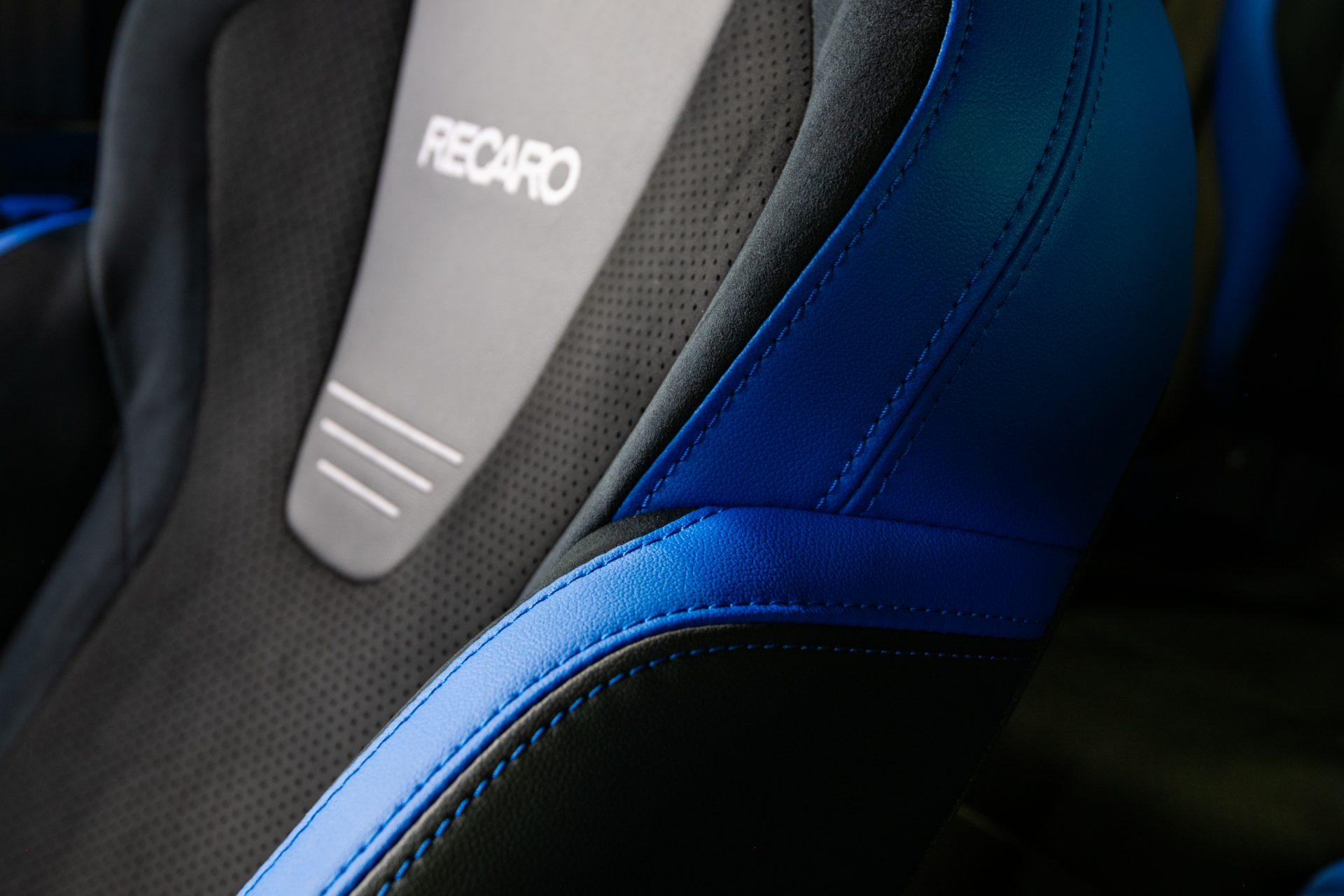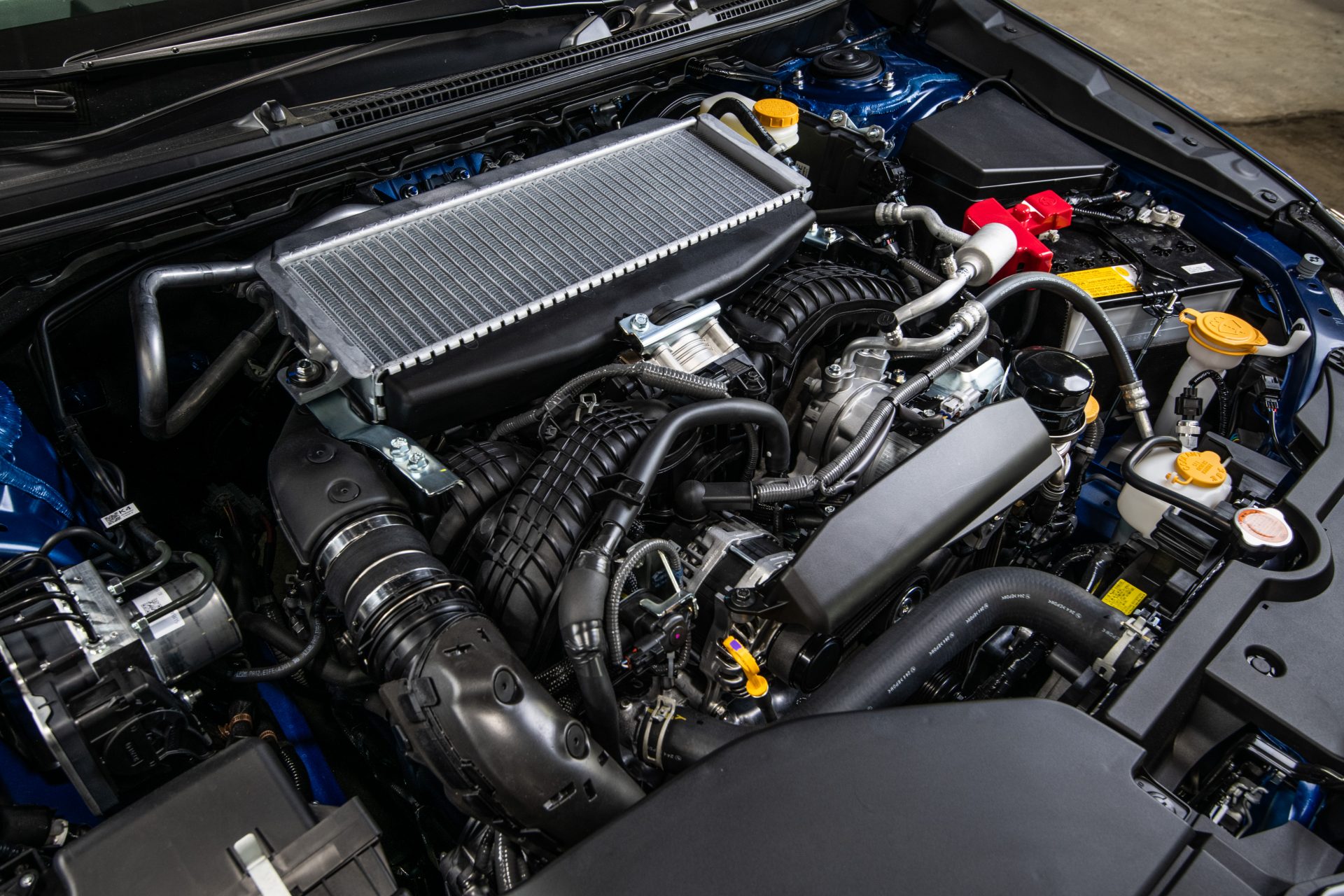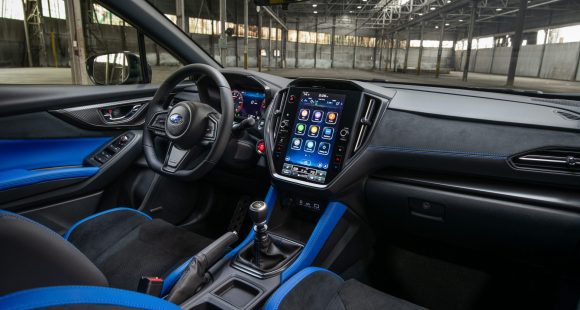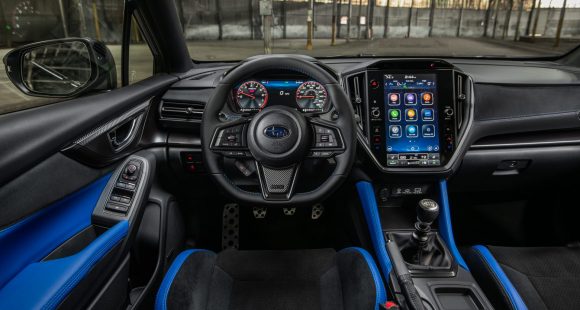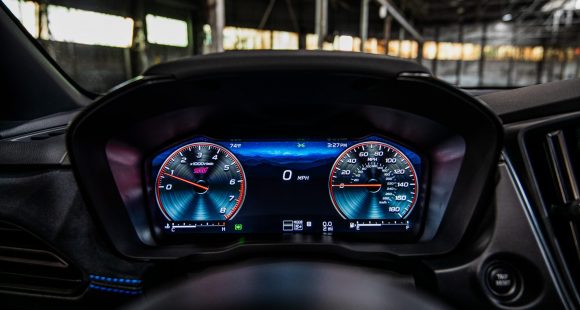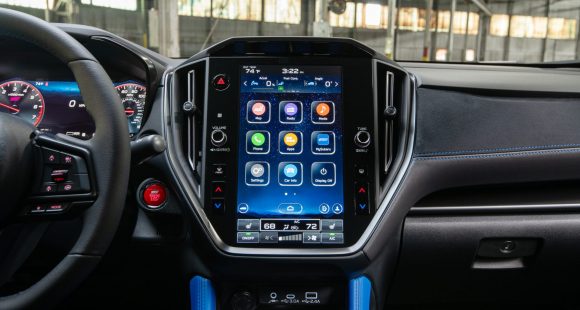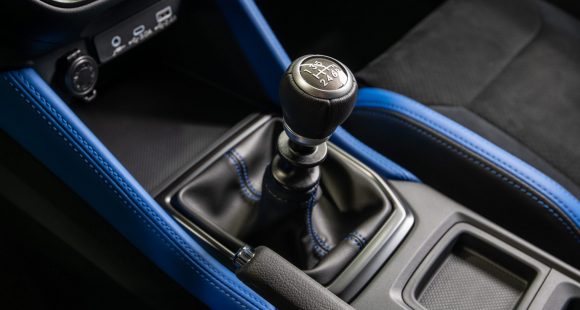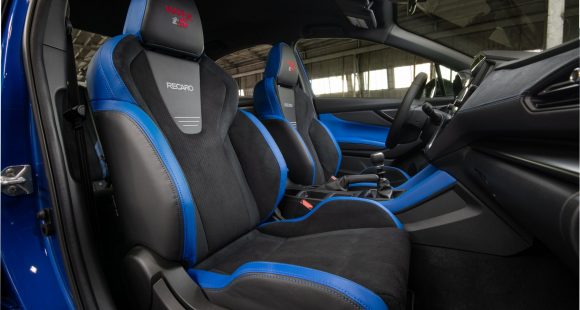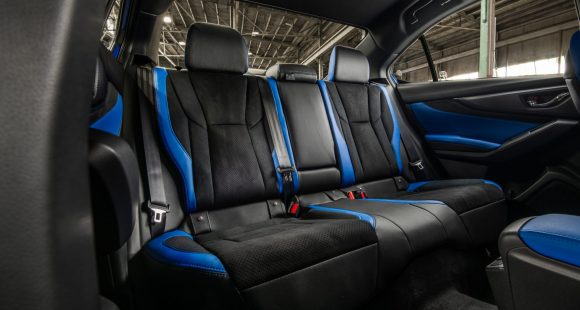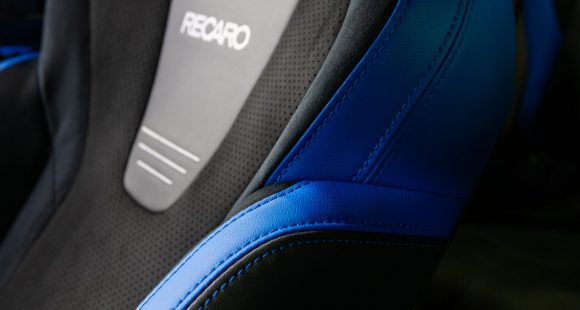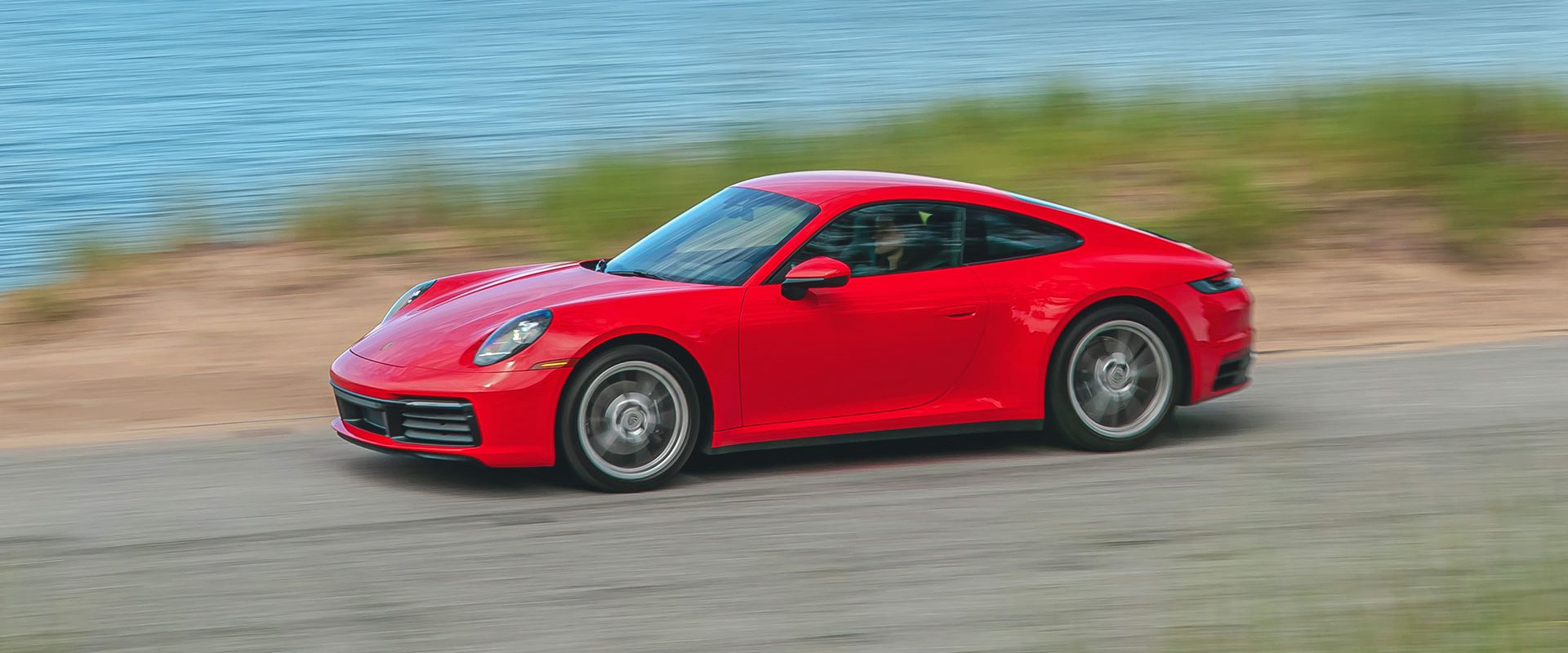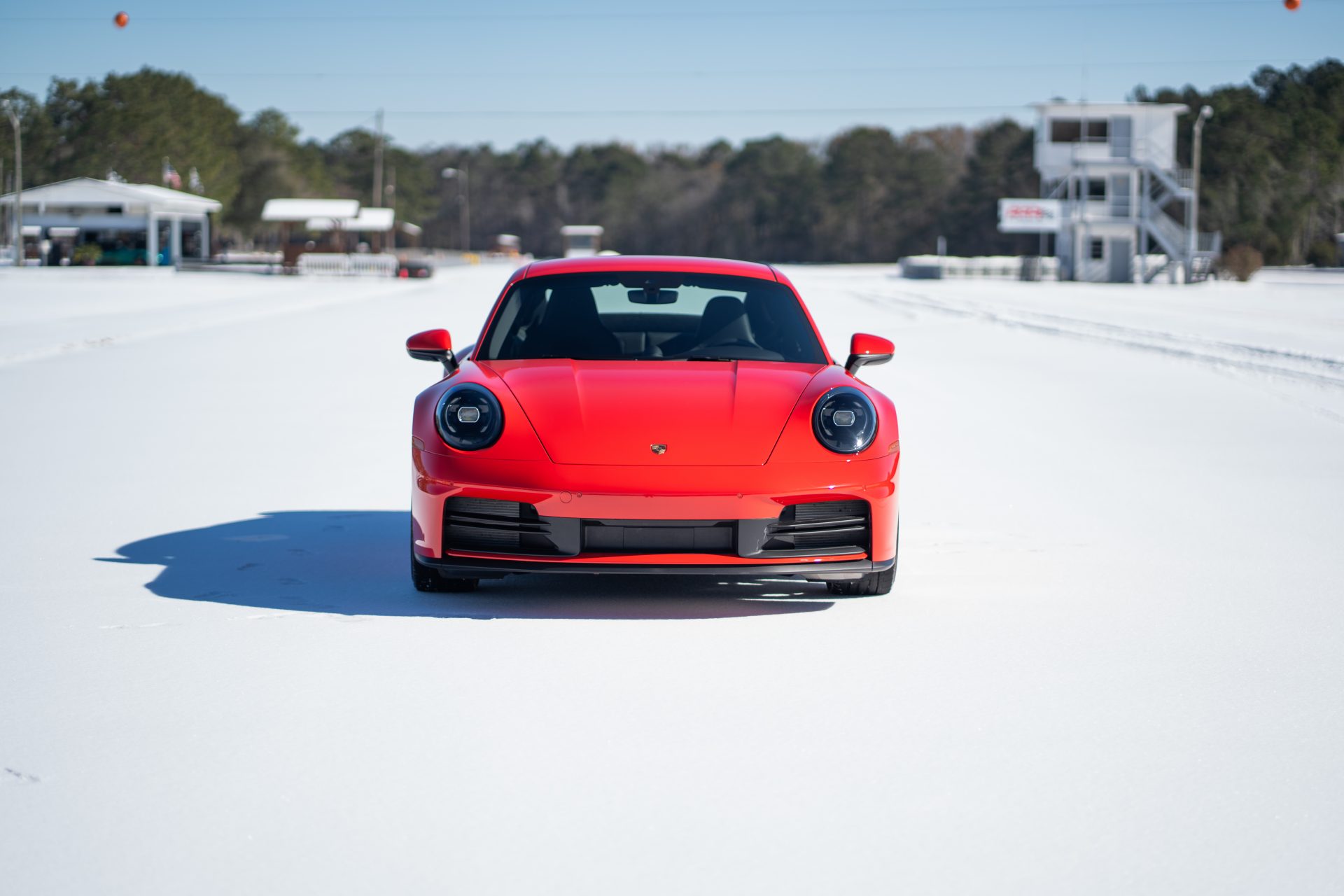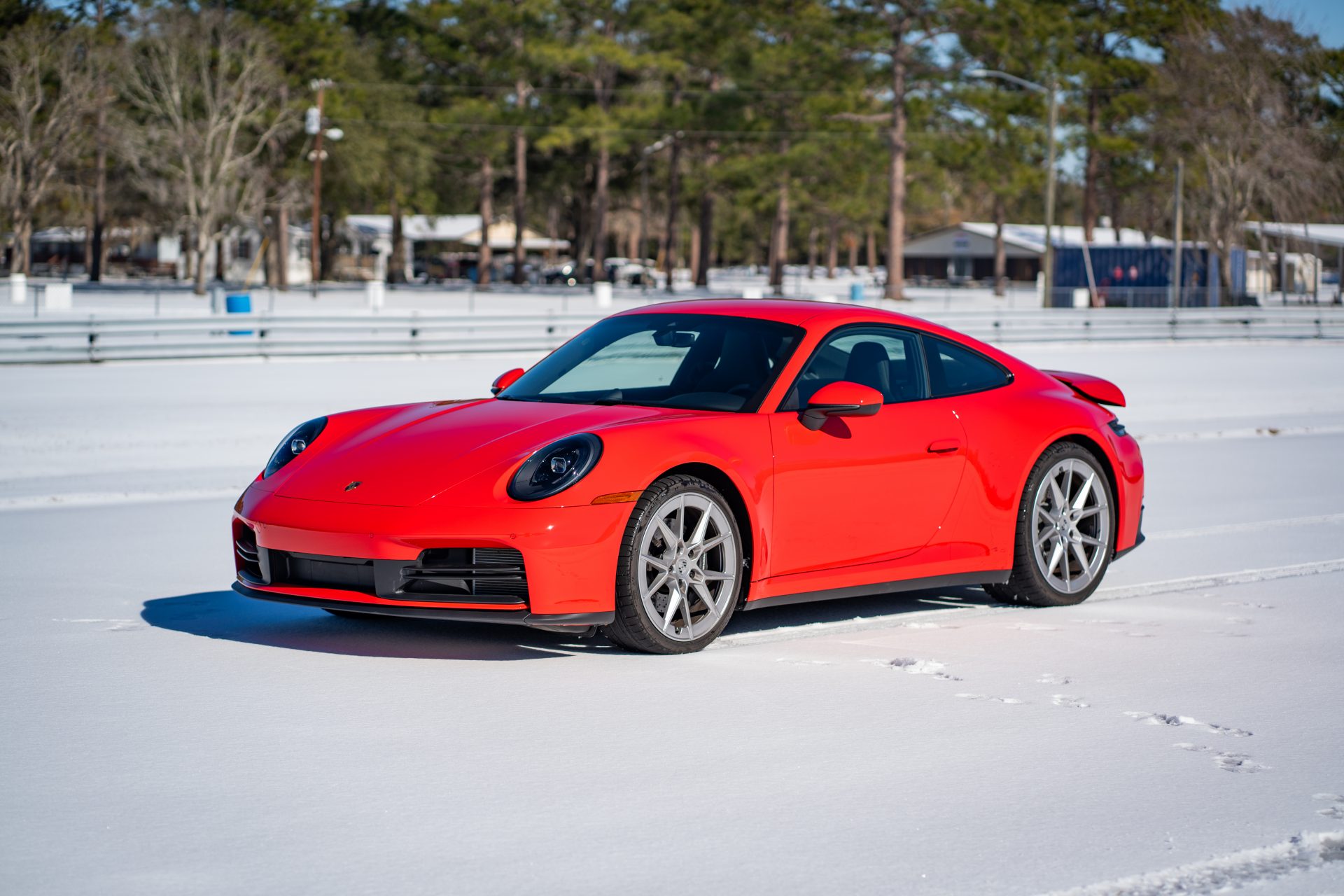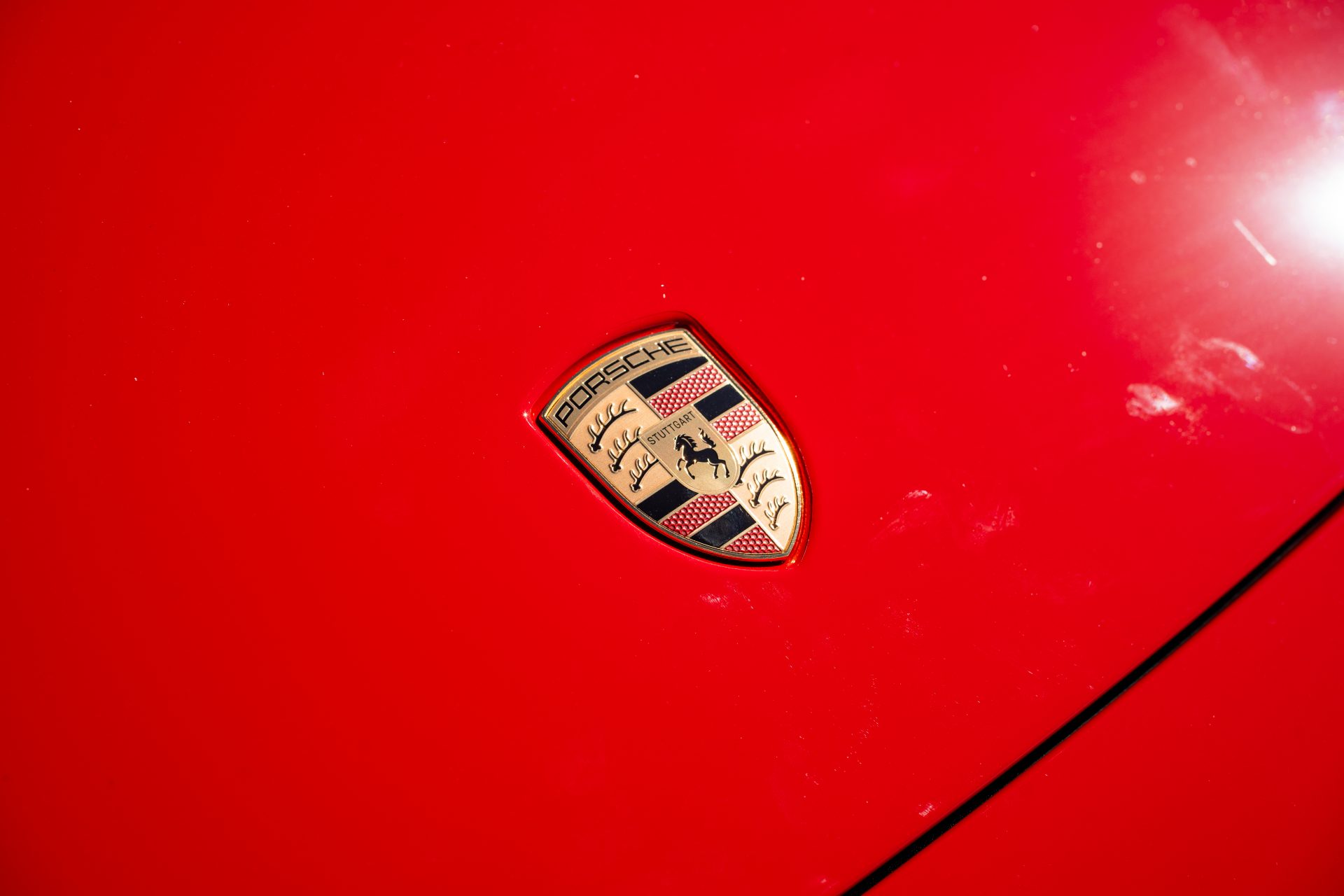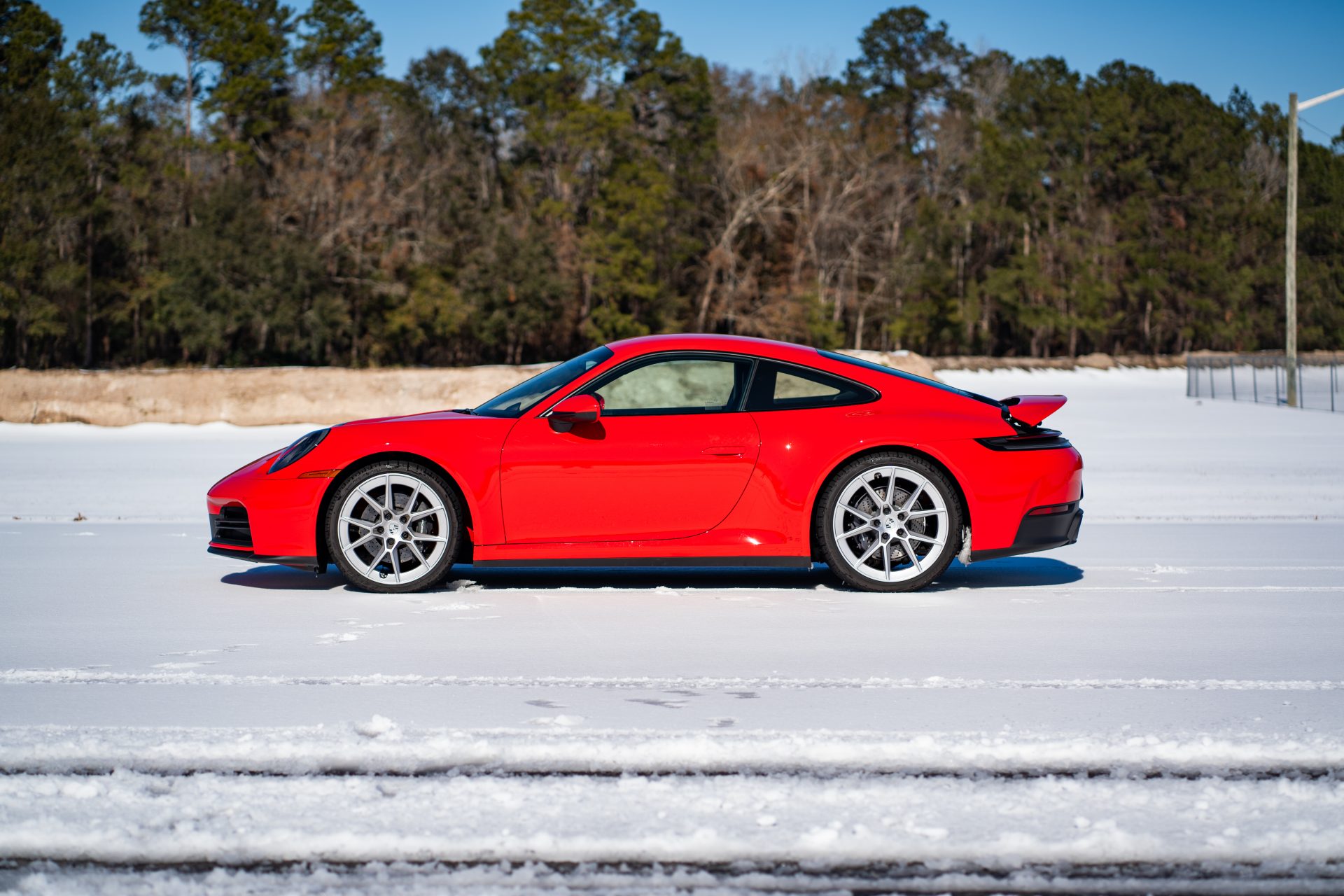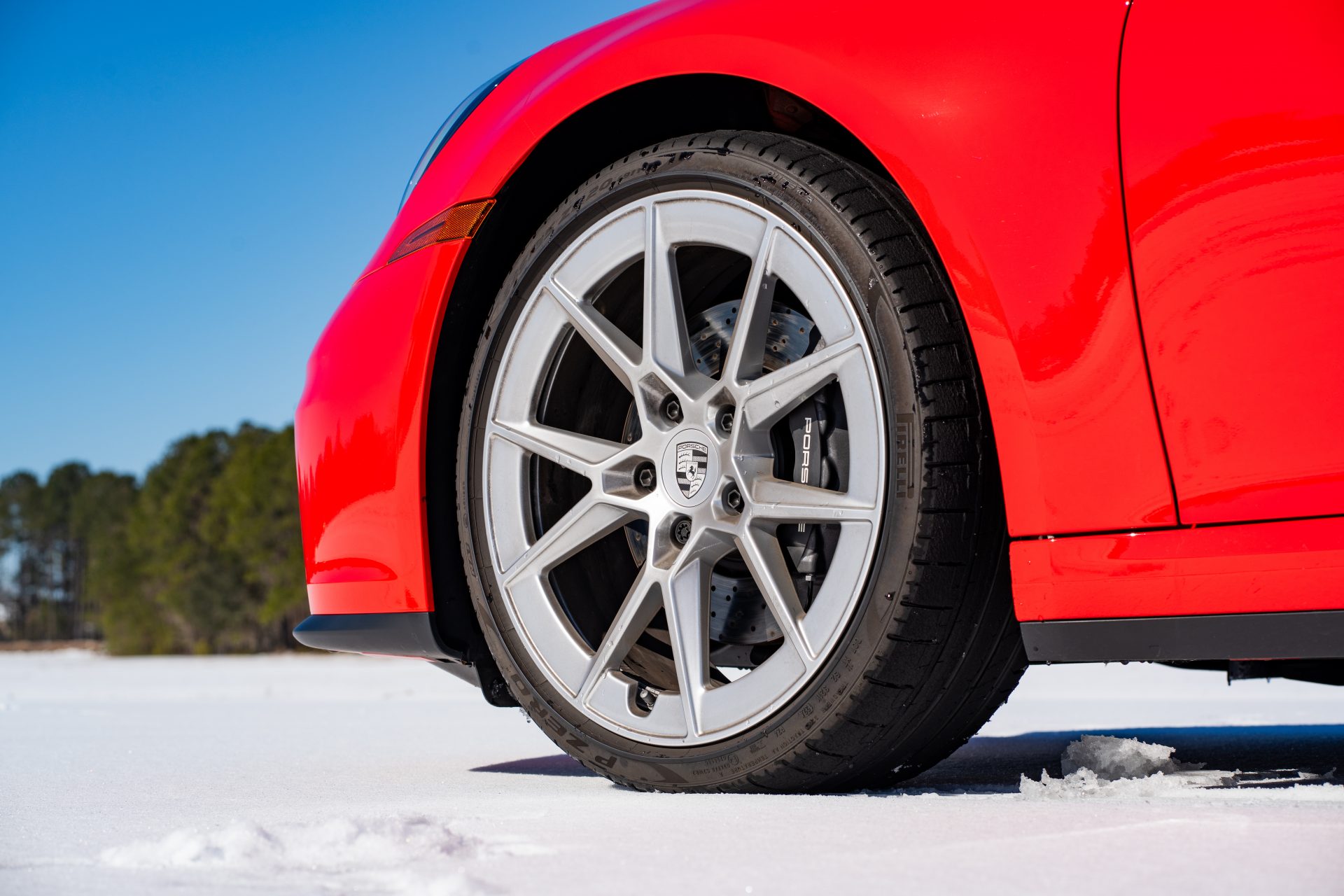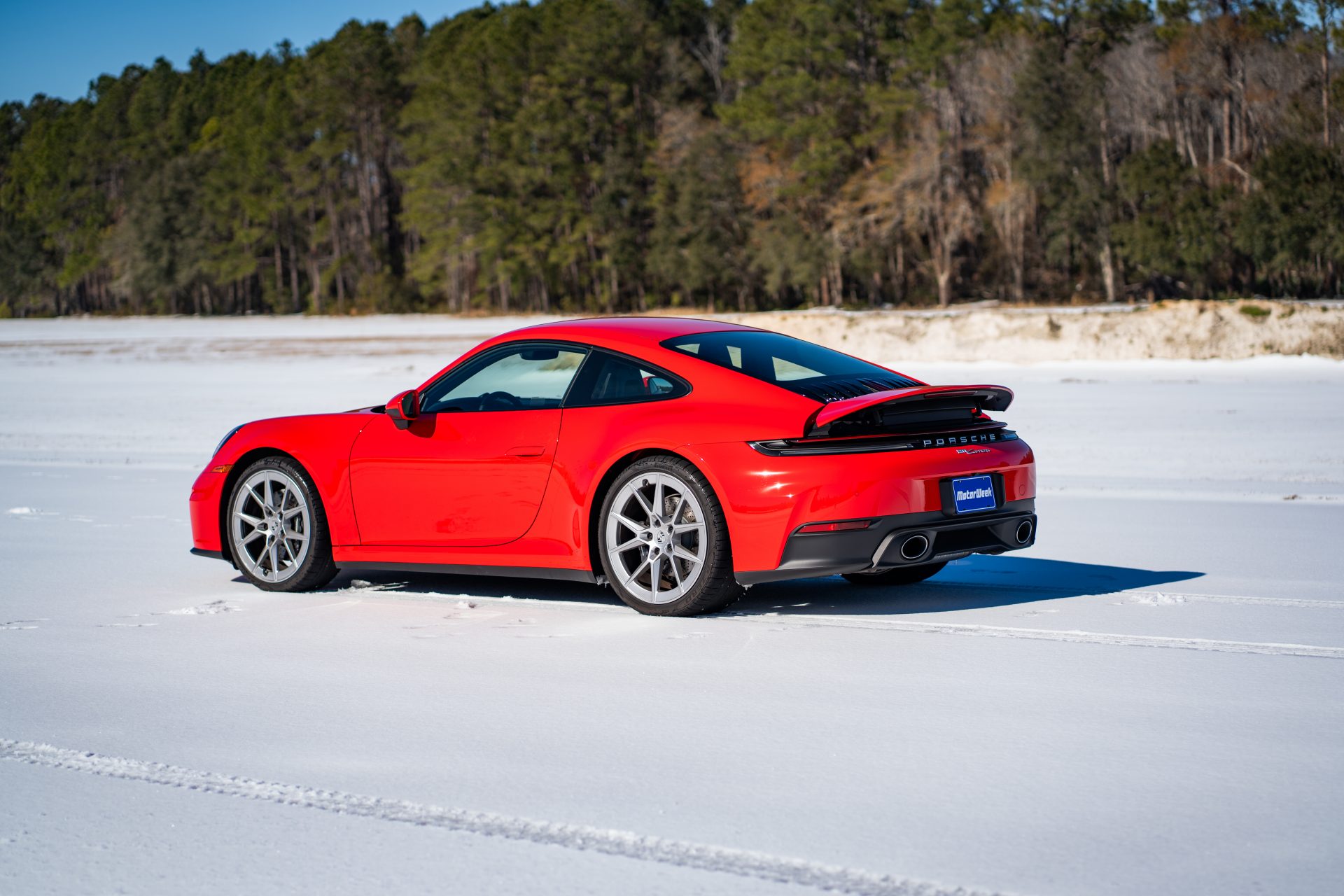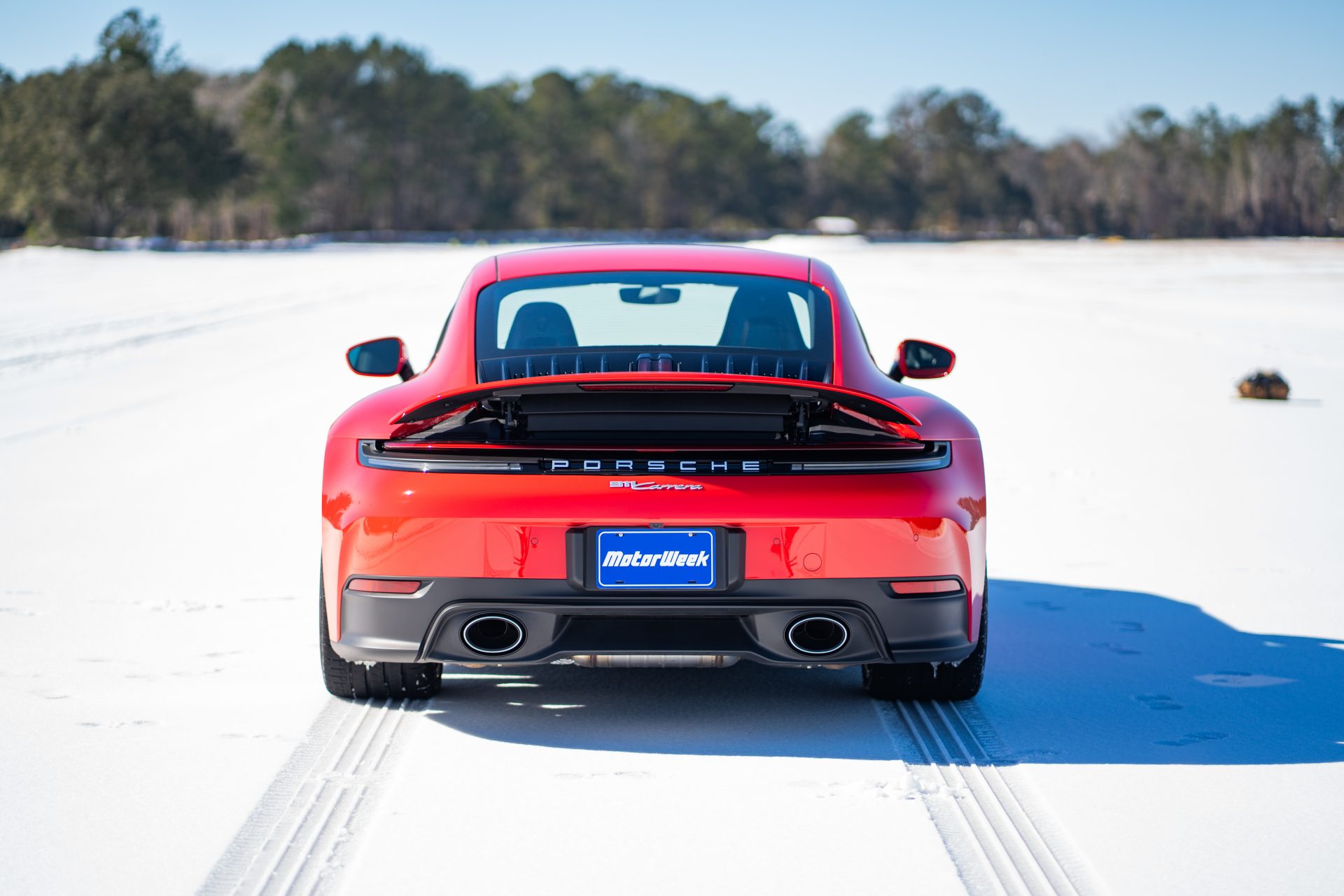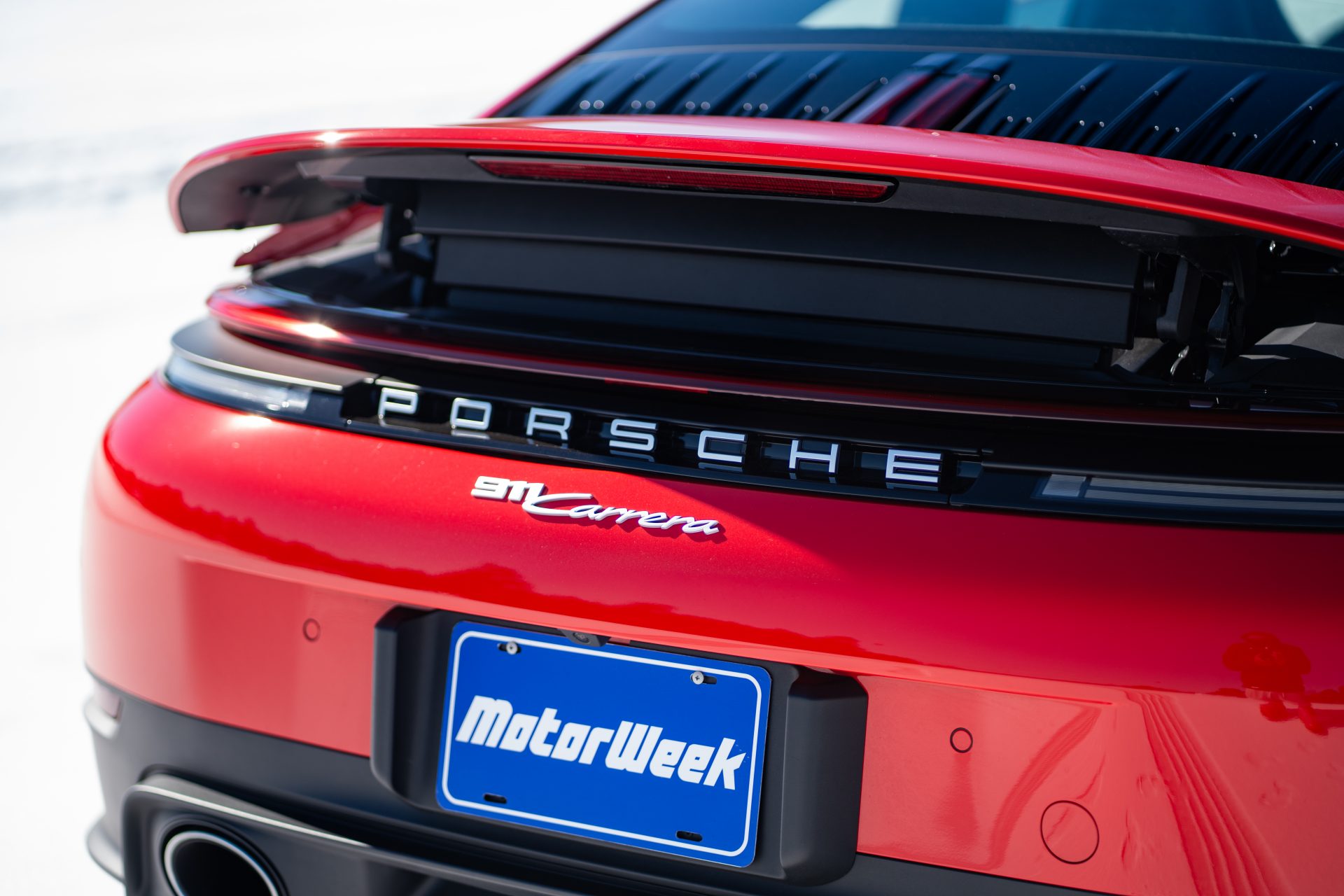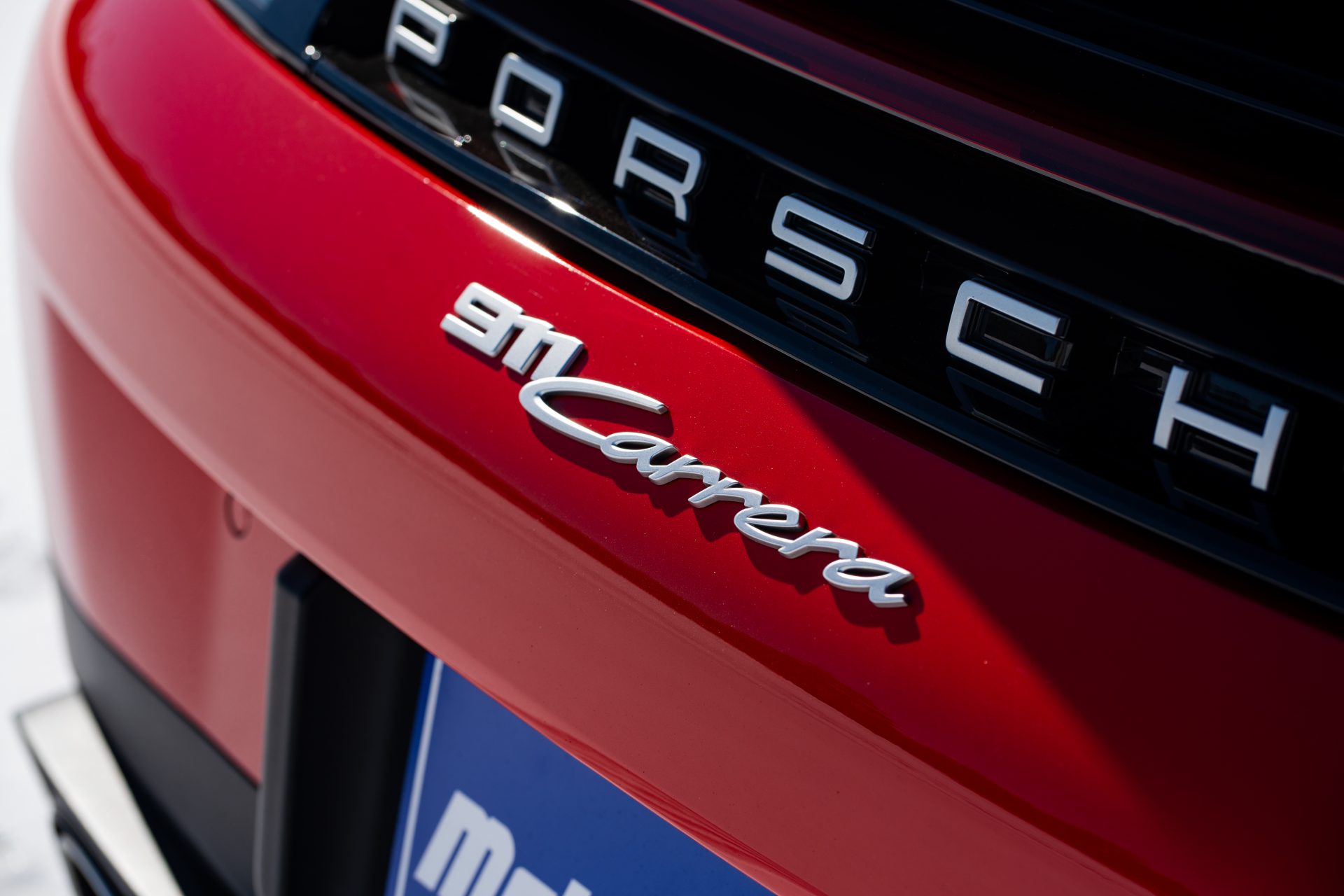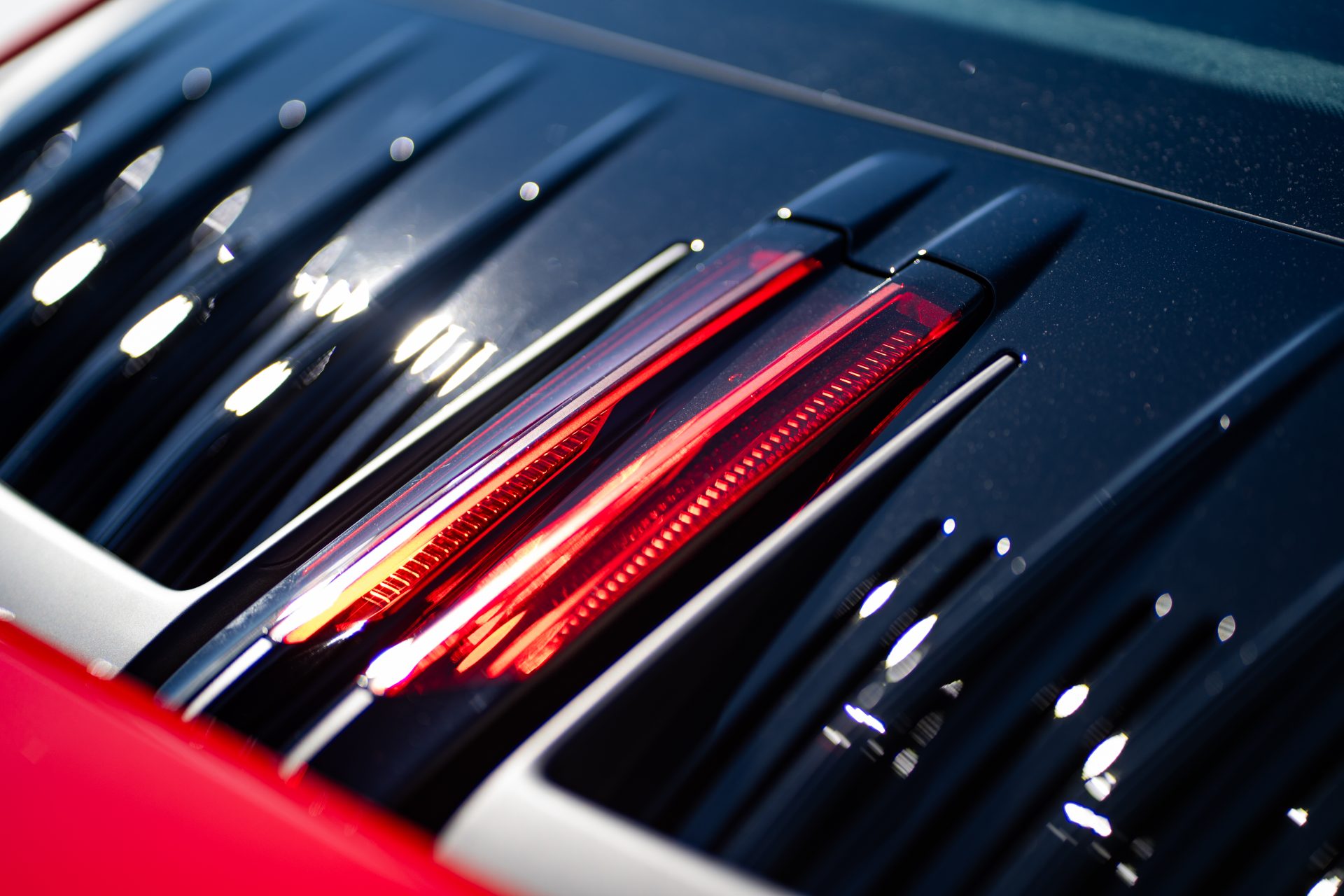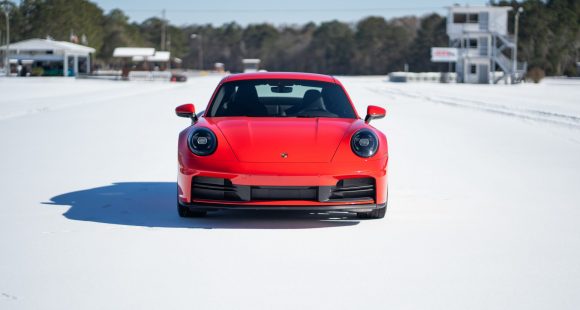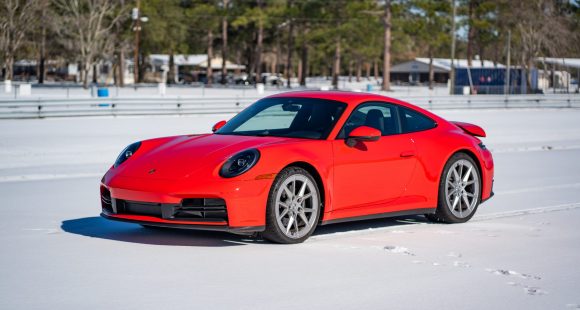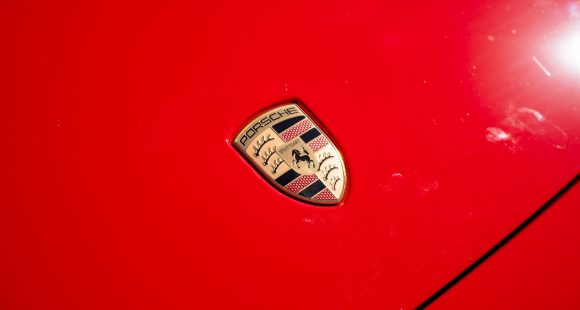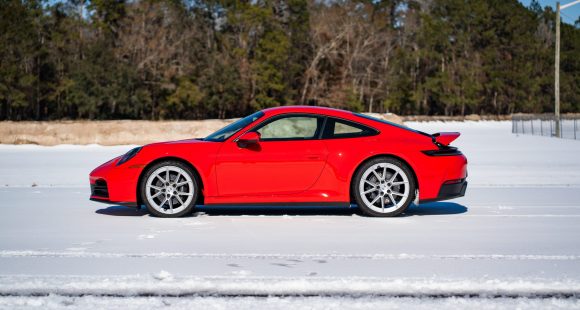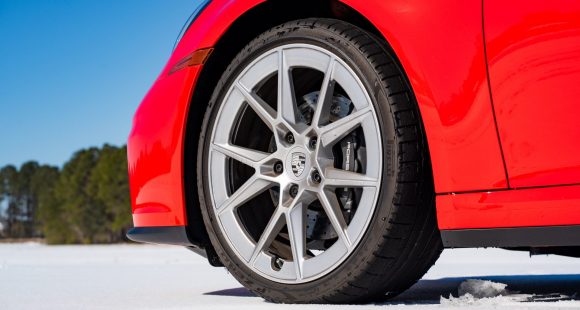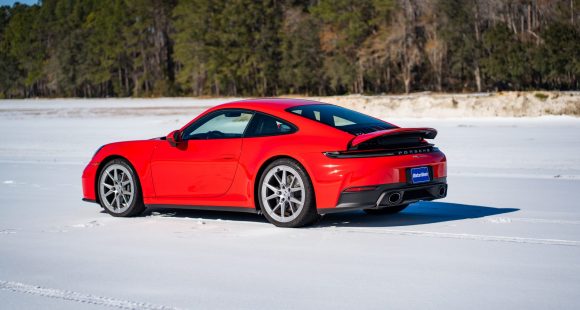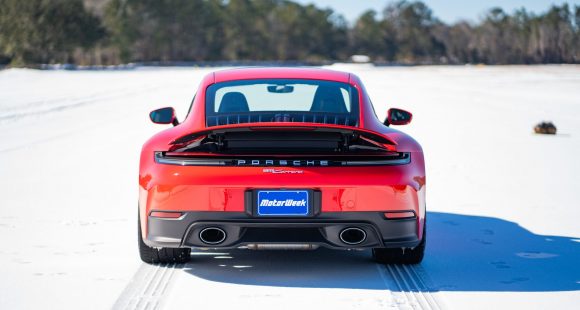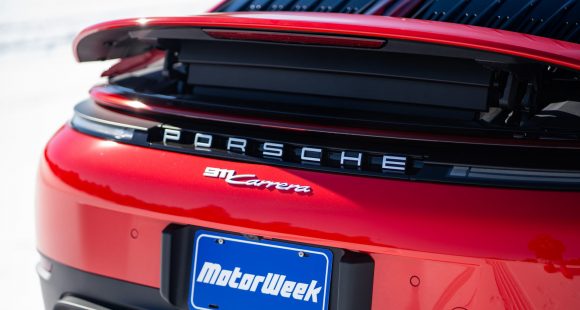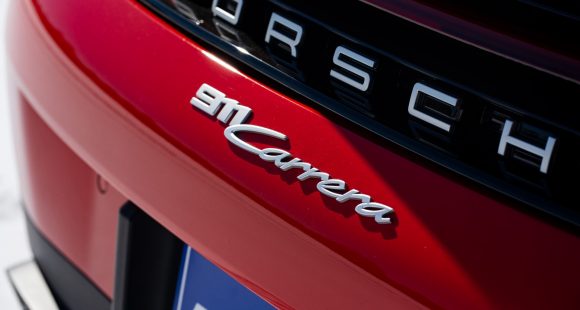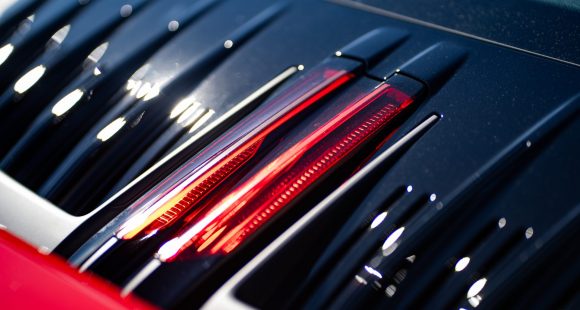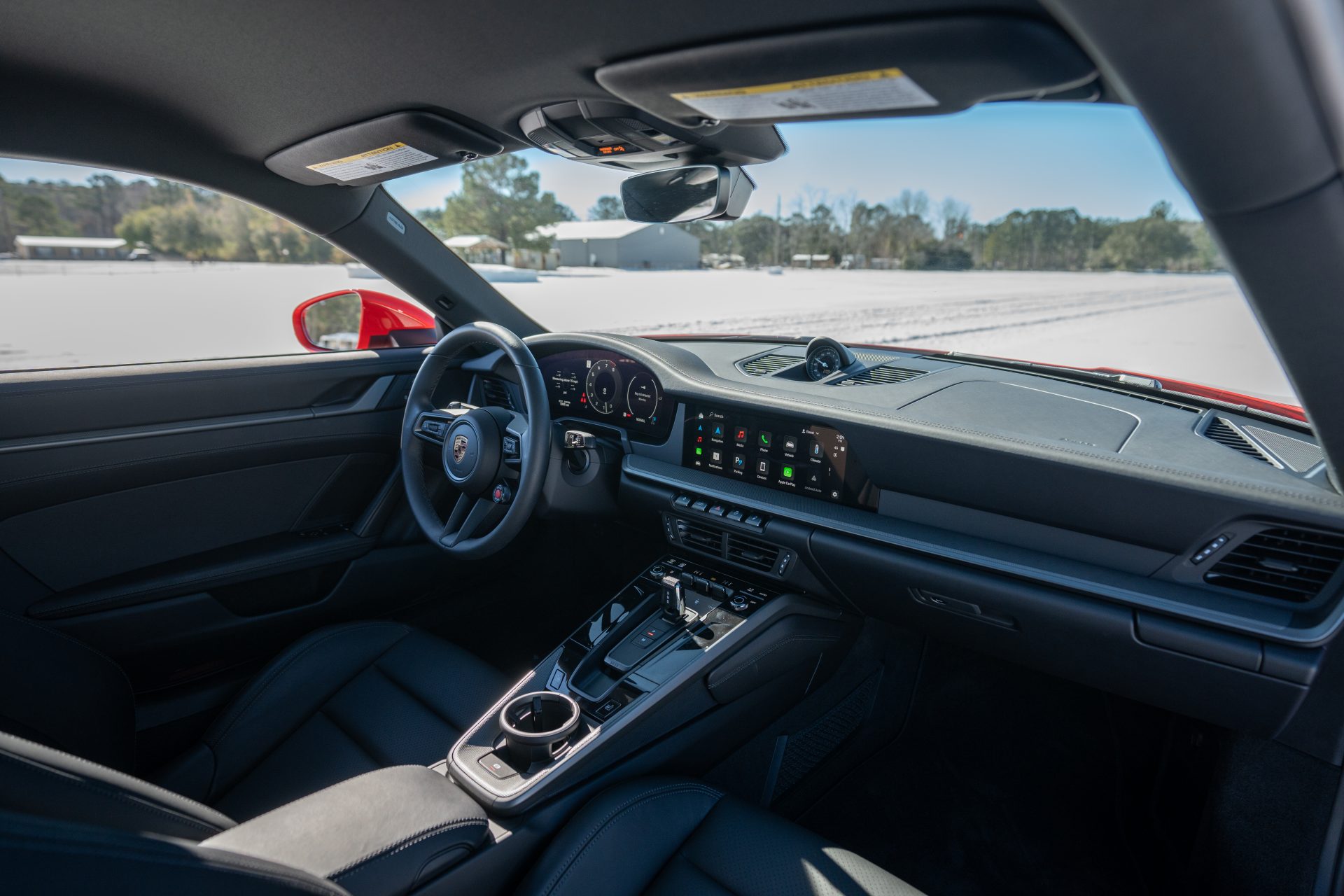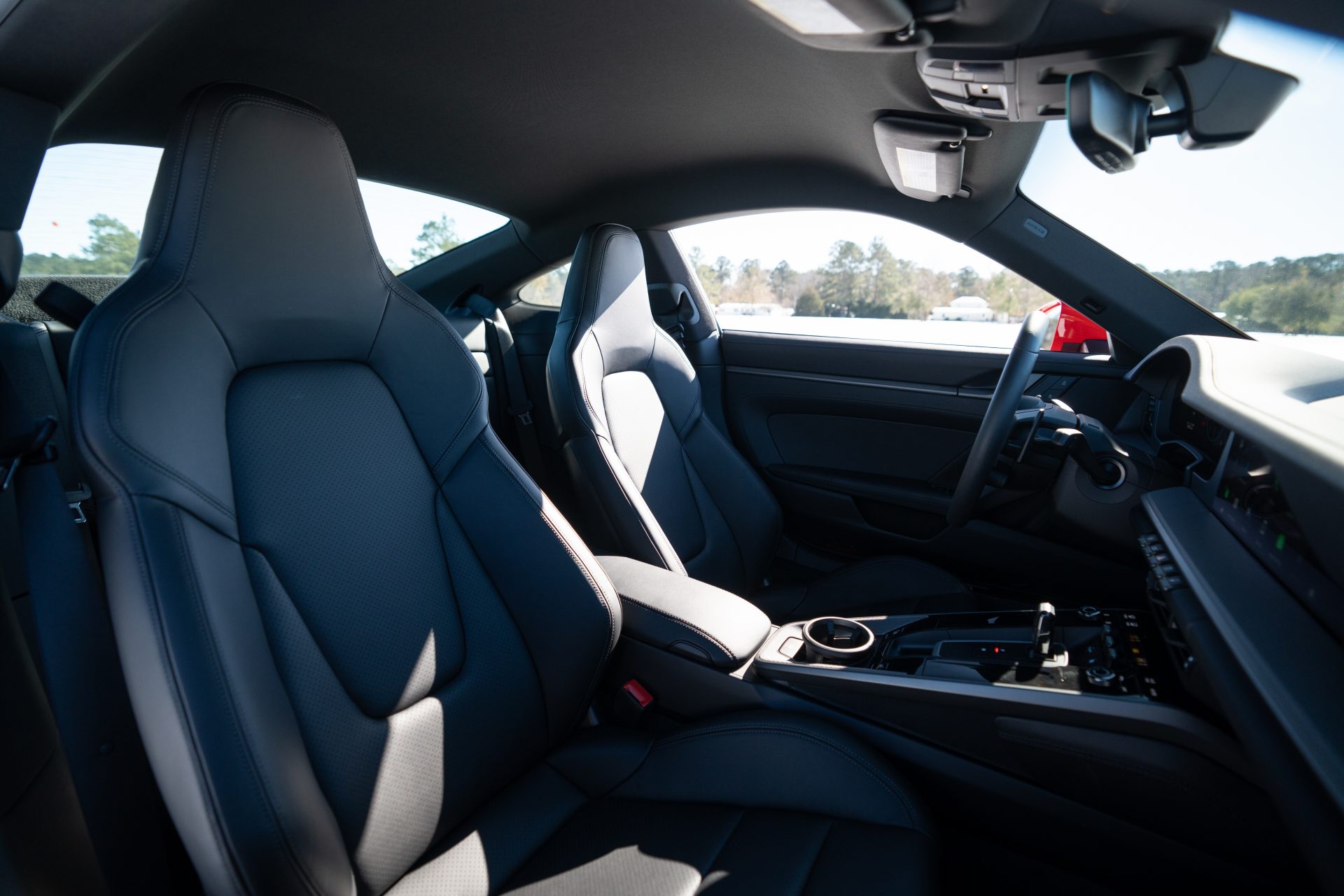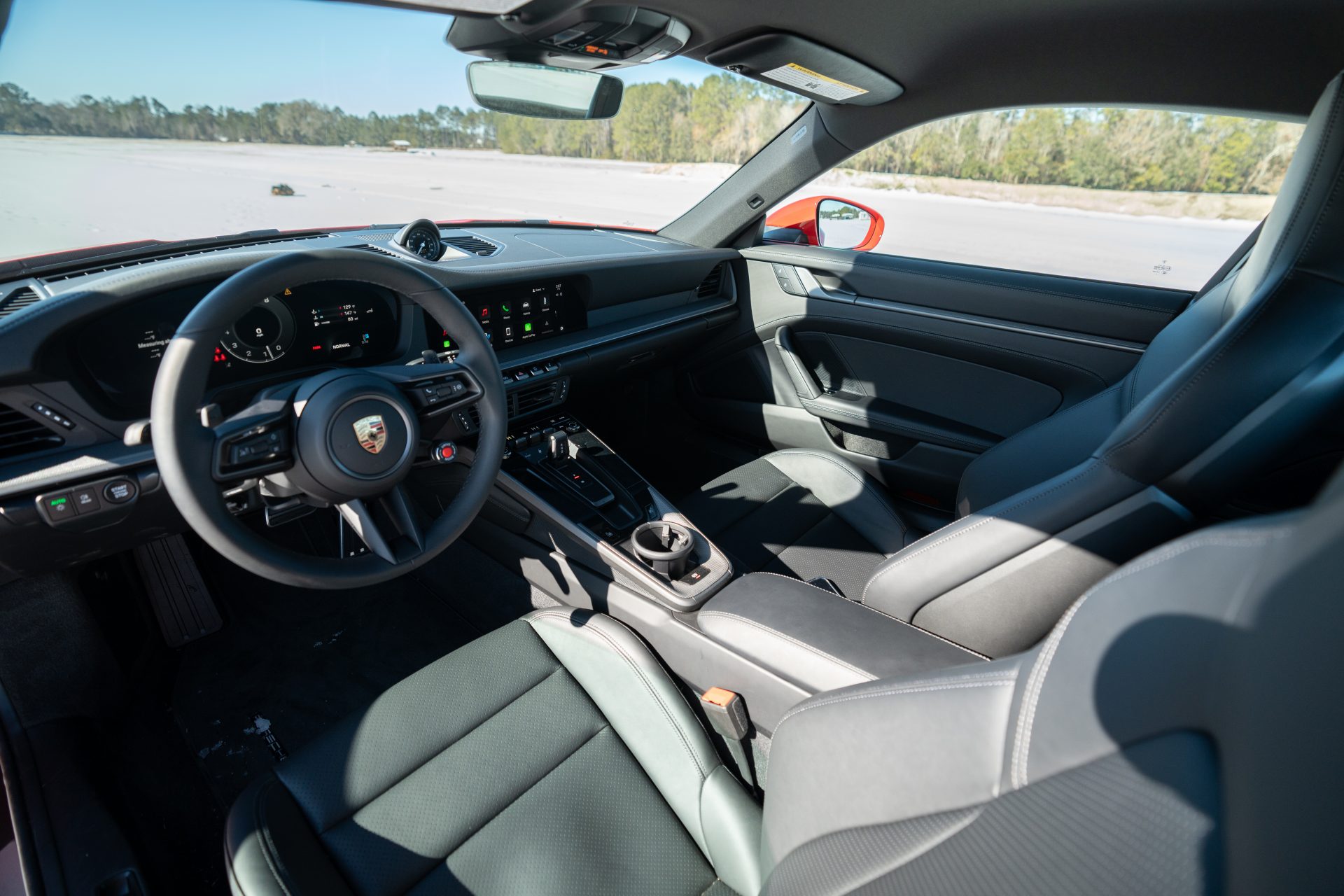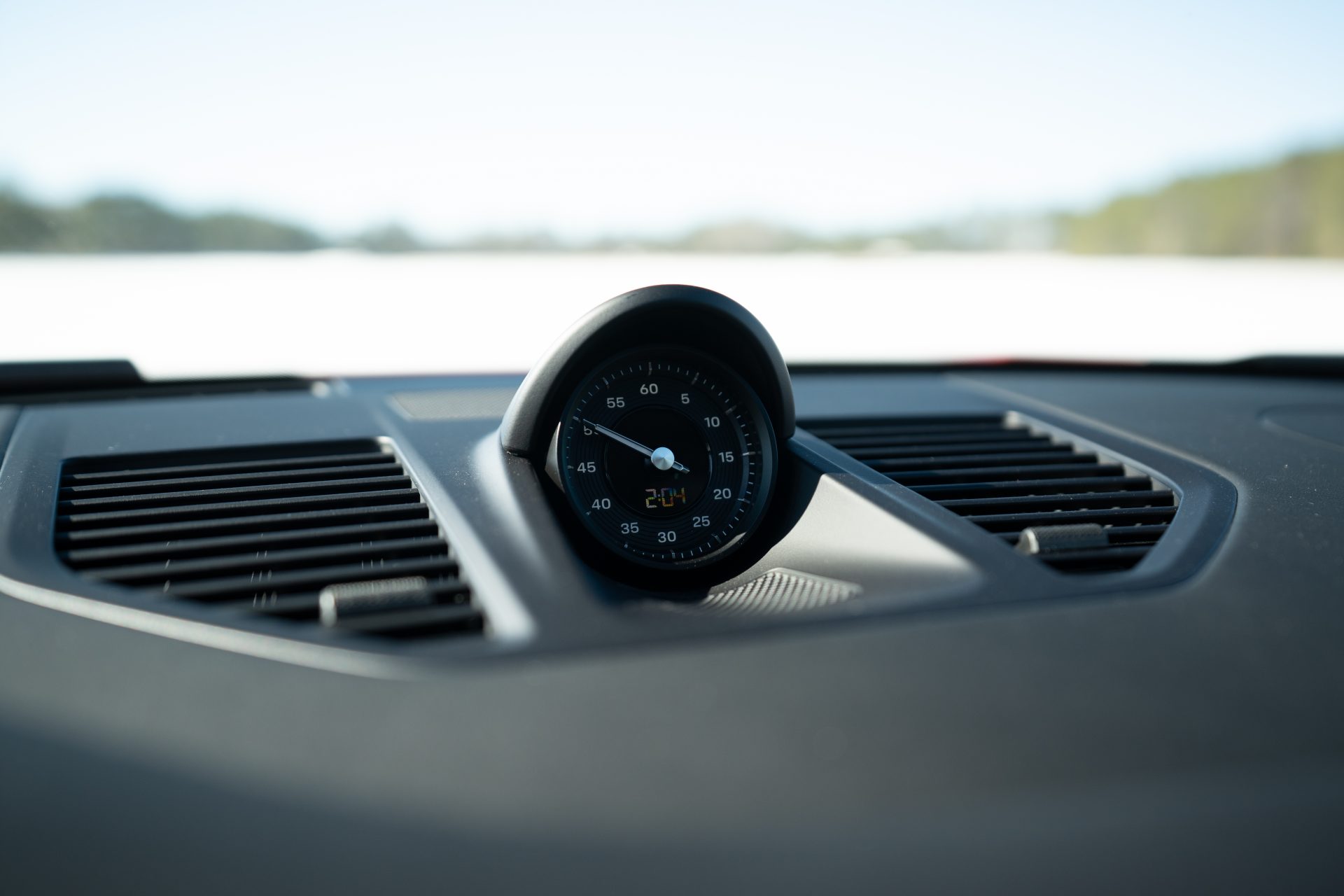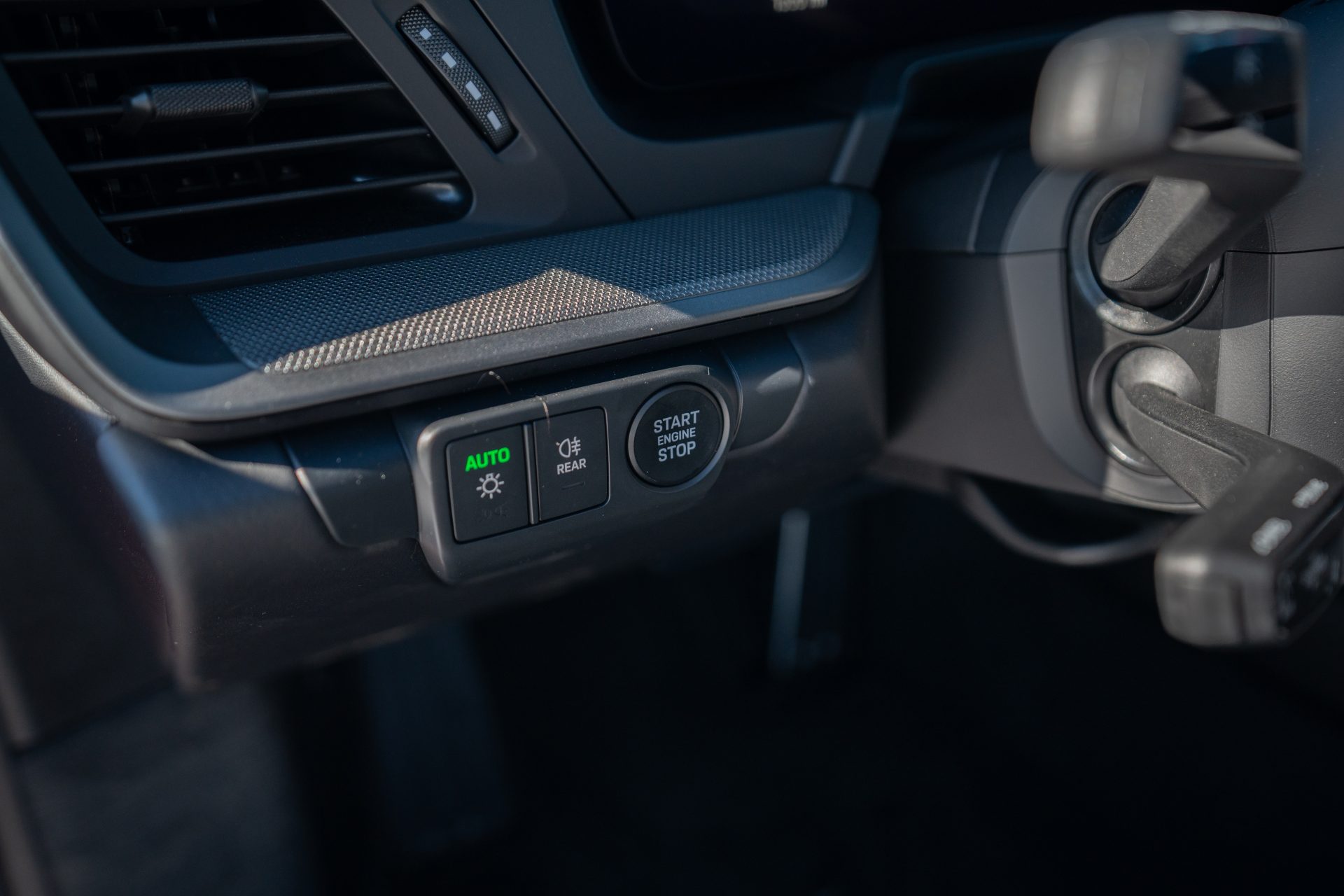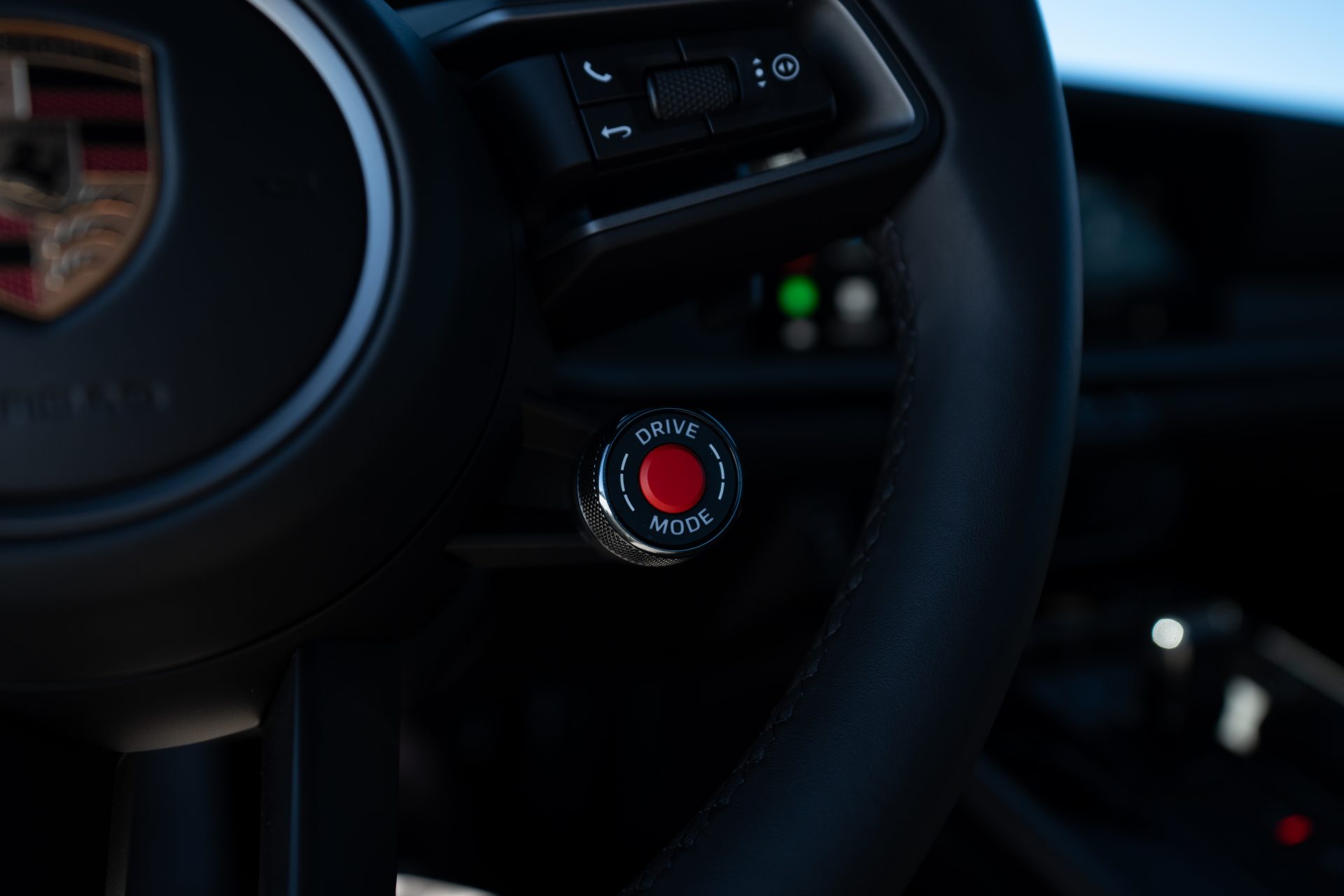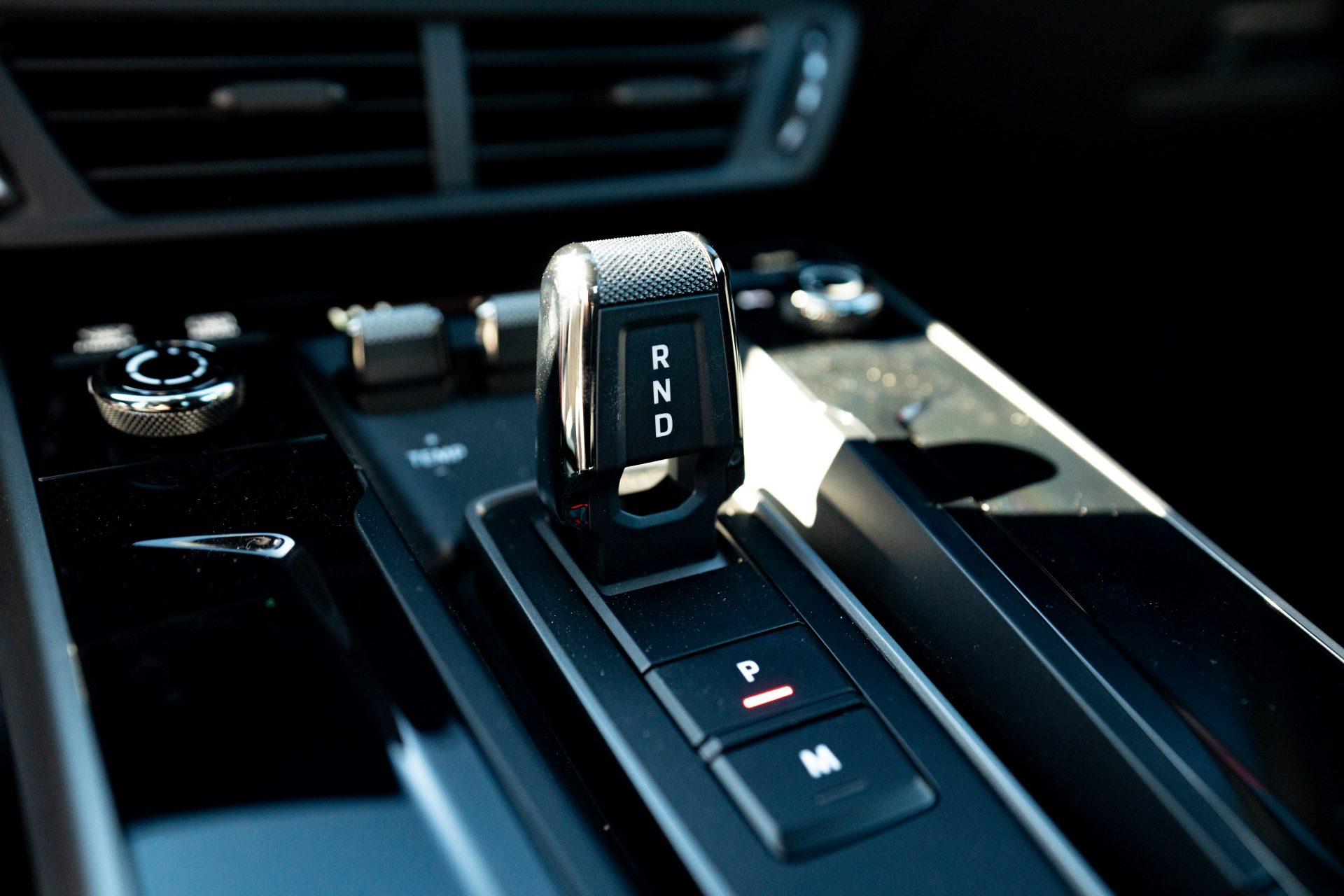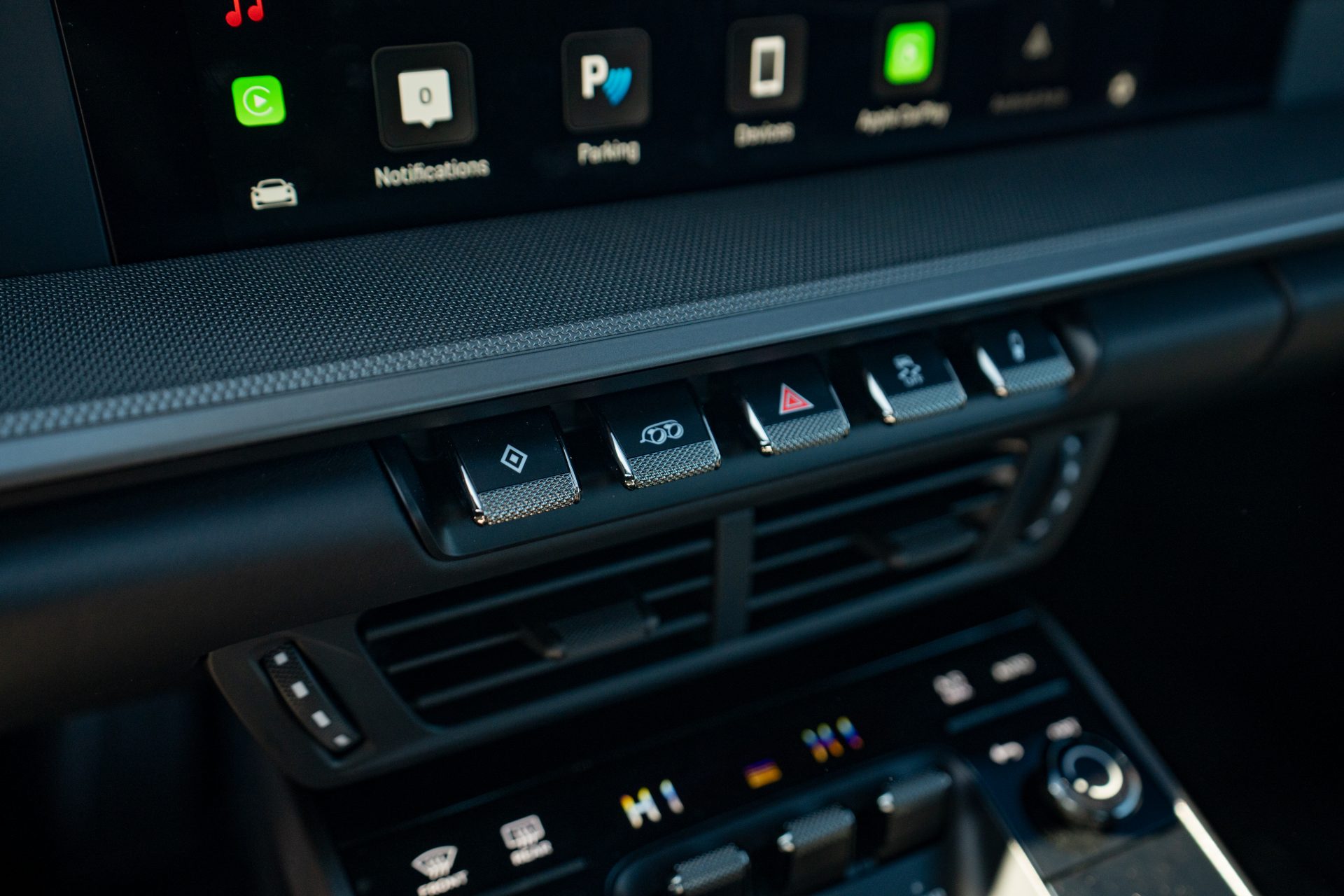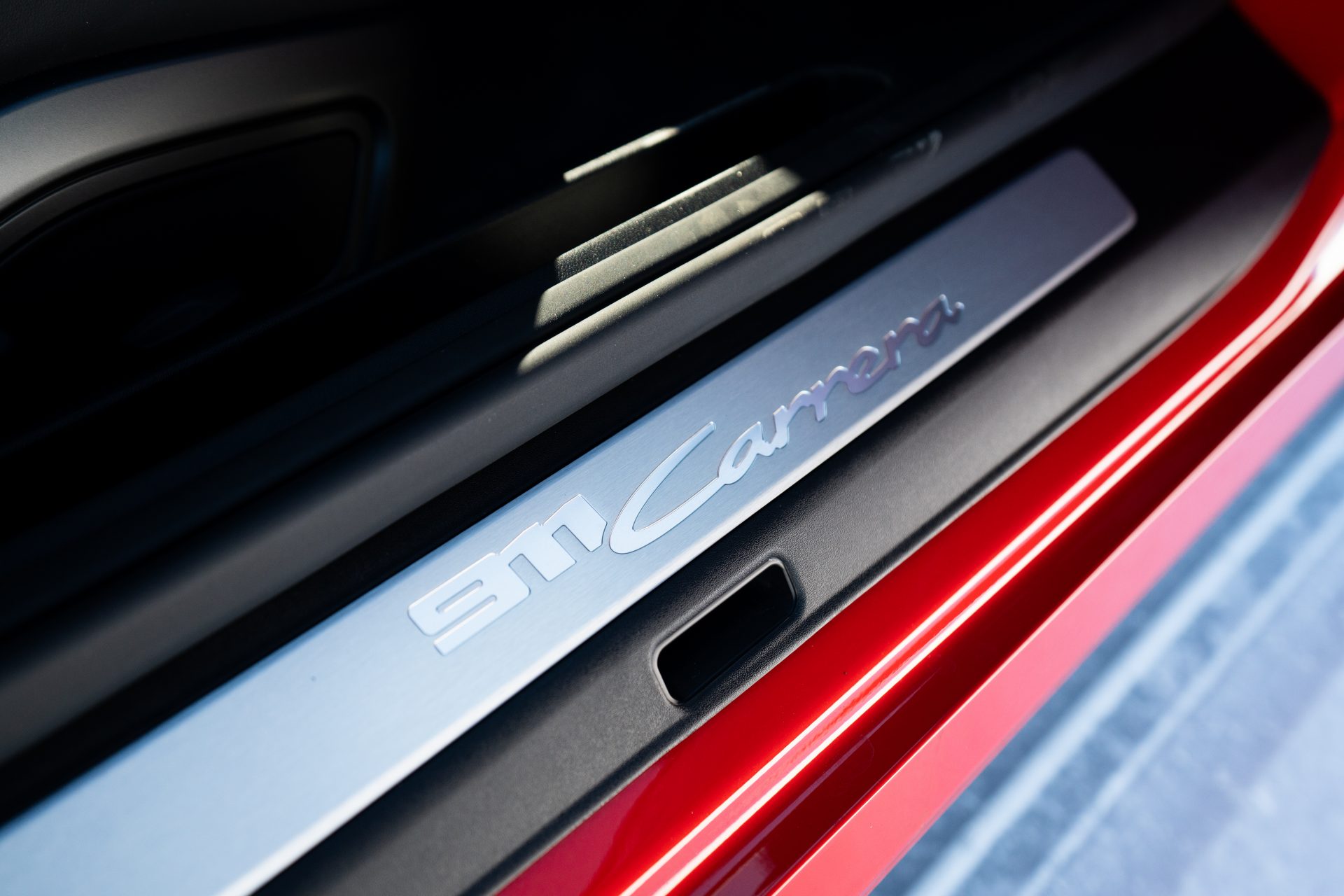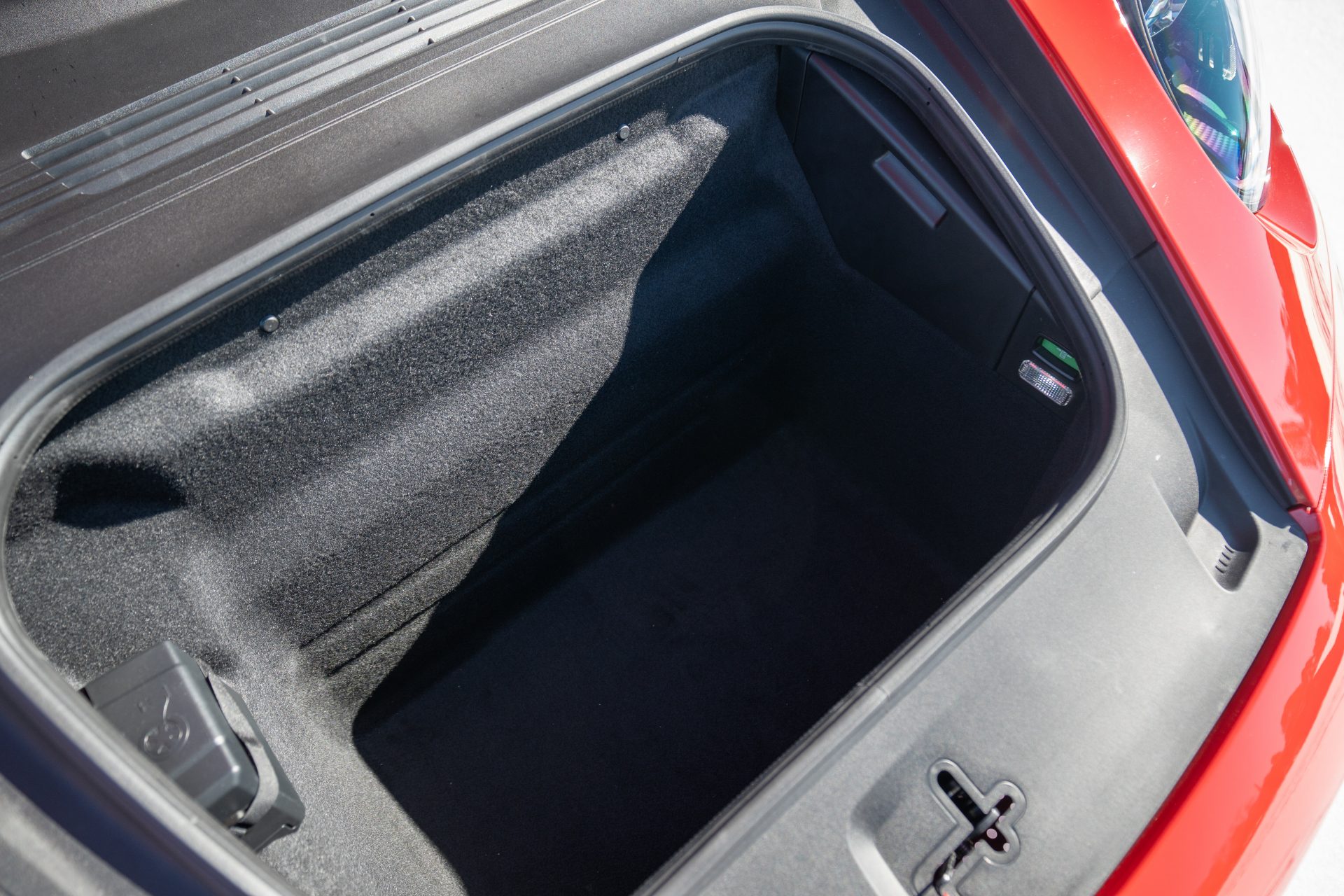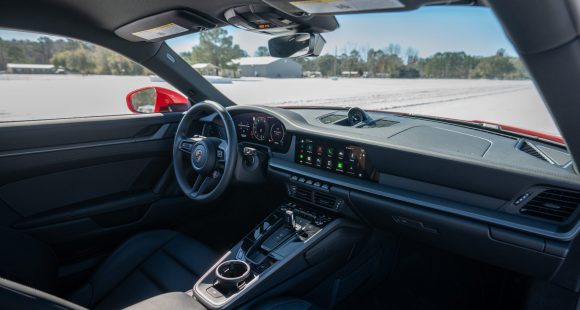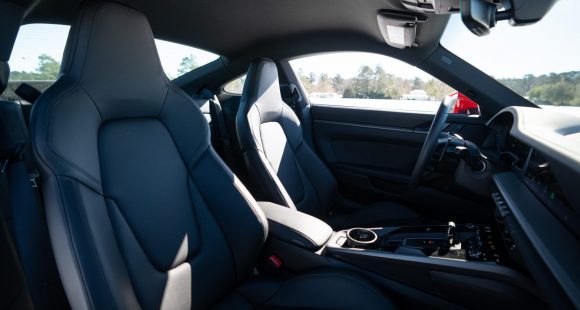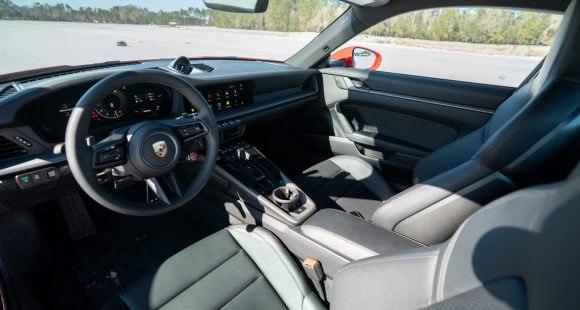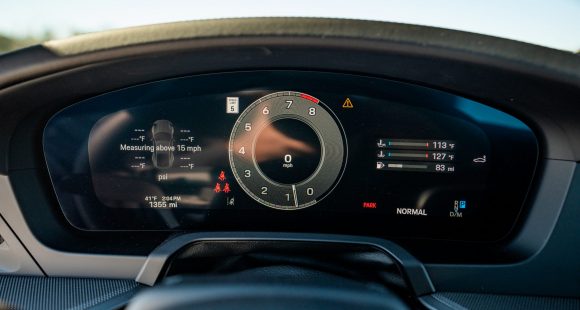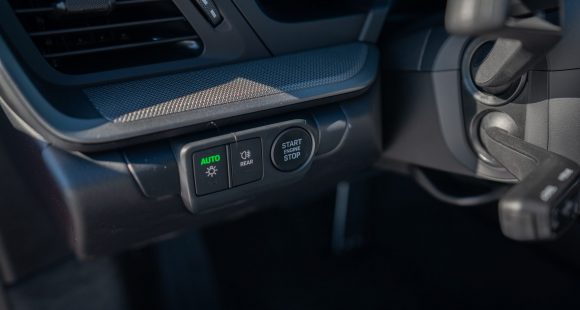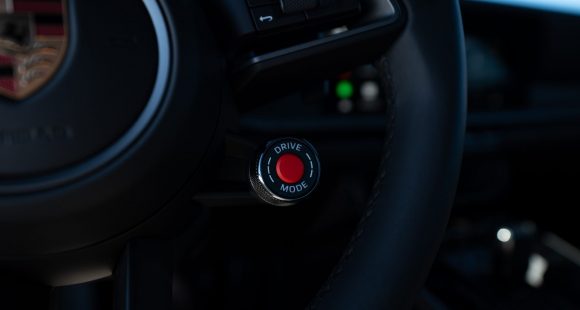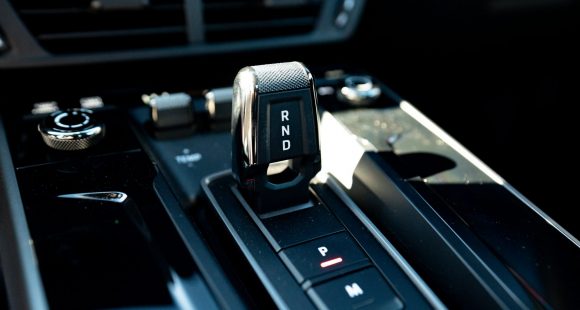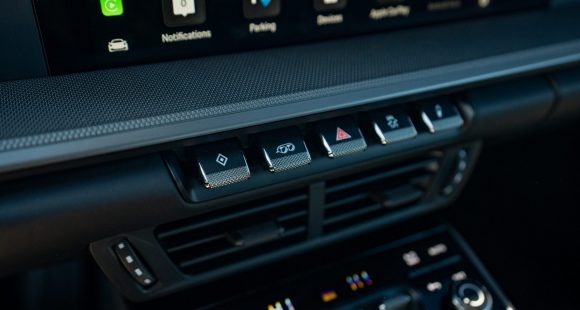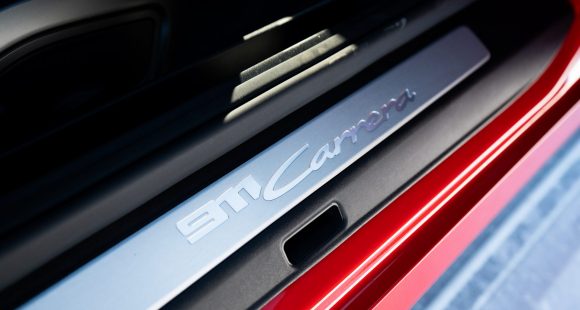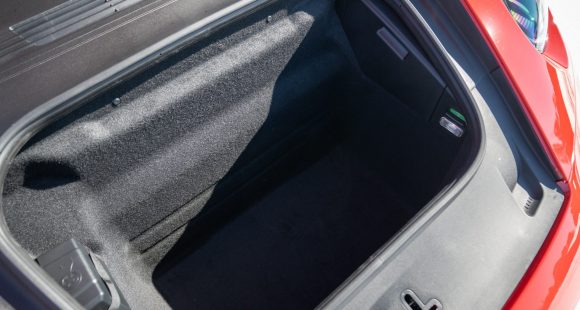2018 Range Rover Velar
When Jaguar entered the SUV world with the F-PACE, we raved about the excellence of their mostly ground up design. After all, they could have simply rebadged a ute from their cousin Land Rover. Now, as it turns out, it’s Land Rover doing some reverse engineering, with a new SUV based on the F-PACE, the Range Rover Velar.
If you’re not a Land Rover enthusiast, you might wonder where this 2018 Range Rover Velar fits in. Well, it’s a true midsize entry, slotting in between the larger Range Rover Sport and compact Evoque.
Engine choices are in step with the Jaguar F-Pace; 2.0-liter turbo-4s, one diesel one petrol, and a 3.0-liter supercharged V6 that rates 380-horsepower and 332 lb-ft. of torque. All work with a ZF 8-speed automatic transmission.
But lest you think this is simply old-school badge engineering, know that Land Rover engineers did indeed start with the bare bones of the F-Pace, including maintaining its 113–inch wheelbase. But from there, they created an all-new Range Rover.
 And certainly a high-fashion one. With no obvious resemblance to the F-Pace; just plenty of styling cues from other Land Rovers; with a floating roof design, some snazzy fender trim, and pop out door handles thrown in for good measure. All standing on up to 22-inch wheels.
And certainly a high-fashion one. With no obvious resemblance to the F-Pace; just plenty of styling cues from other Land Rovers; with a floating roof design, some snazzy fender trim, and pop out door handles thrown in for good measure. All standing on up to 22-inch wheels.
More emphasis was put on off-road performance as well. So, in addition to standard all-wheel-drive, the Velar is available with Terrain Response 2, and gets an electronic air suspension setup not obtainable on the F-Pace, at least for now anyway. And, it’s not just pretty, with a towing capacity of 5,500-lbs.
Admittedly, handling prowess has been lost in the process, as the Velar doesn’t feel quite as light on its feet as the F-Pace, but ride quality is truly sublime.
Dialing up Dynamic mode helps it feel it’s sportiest, and owners can dial in their own customized setup.
Maintaining their superior off-road image is vital to Land Rover, and the Velar is truly more capable than most will ever experience. It also feels rock solid with its aluminum monocoque chassis construction. There’s no ability to engage a low range; but the full suite of electronic aids specific for the trail, have the ability to send full power to whichever wheel is getting the most traction, getting you through just about anything you might encounter.
 Of course you’re well-swaddled in Range Rover luxury while doing that, including numerous leather packages, and supremely comfortable seats. It’s a gorgeous look.
Of course you’re well-swaddled in Range Rover luxury while doing that, including numerous leather packages, and supremely comfortable seats. It’s a gorgeous look.
This is certainly not your father’s Land Rover, unless he had his own proprietary touch panel control system installed. Here it’s Land Rover’s new InControl Touch Pro Duo with twin 10-inch capacitive touchscreens.
With few traditional physical controls, it can be intimidating when you first hop in, but it’s a mostly-logical setup that doesn’t take too long to get comfortable with.
Rear seat passengers don’t miss out on the luxury treatment either, and space is among best in class.
As is cargo room, 34.4 cubic-ft. behind the 2nd row, 70.1 with the 40/20/40 split seatbacks folded flat.
All of that makes this Range Rover as functional as it is beautiful.
 As for track work, our supercharged V6 Velar hopped off the line eagerly with good all-wheel-drive grip. The rear really squats down as you take off, hitting 60 in 5.5-seconds.
As for track work, our supercharged V6 Velar hopped off the line eagerly with good all-wheel-drive grip. The rear really squats down as you take off, hitting 60 in 5.5-seconds.
And right away, you realize Jaguar kept all of the cool exhaust notes for themselves, as here you just get some droning engine noise. Shifts are quick and smooth however, taking you through the ¼-mile in 14.0-seconds flat at a nice even 100 miles-per-hour.
It was a difficult task determining what exactly its capabilities are in the handling department. The chassis feels proficient enough, but as soon as there’s even a hint of understeer, the “safety at all costs” computer initiates “priority slow down procedures” and starts triggering the brakes.
It does exhibit only minor body roll throughout the cones however, with medium to light steering.
And just 102-feet is all it took to bring this thing to a halt from 60. Some nose dive is to be expected bringing 4,471-lbs. to a complete stop that quickly, but even that was relatively minor.
Government Fuel Economy Ratings for the V6 are 18-City, 24-Highway, and 20-Combined. We averaged a fine 21.7 miles-per-gallon on the required Premium. That makes for an Energy Impact Score slightly below the average for all cars, with annual oil consumption of 16.5-barrels and CO2 emissions of 7.3 tons.
A wide range for this Rover has prices starting at just $50,895, and stretching to at least $78,095 for an R-Dynamic HSE V6; our tester was closer to $90,000. Yikes!
Still, if you’re like us, your first response to the middle-weight 2018 Range Rover Velar may be “just what we needed, another luxury SUV”. But, Land Rover has been building posh off-roaders for longer than anybody, so it’s always good to see what they’re up to next. Now it’s up to the rest of the segment to see if they can keep up with the Velar.
Specifications
- Engine: 3.0 liter
- Horsepower: 380
- Torque: 332 lb-ft.
- 0-60 mph: 5.5 seconds
- 1/4 mile: 14.0 seconds @100 mph
- EPA: 18 mpg city / 24 mpg highway,
- Energy Impact: 16.5 barrels of oil/yr
- CO2 Emissions: 7.3 tons/yr
2025 Subaru WRX tS
Subaru’s “World Rally eXperimental” Gets Tecnica-Tuned Tech
Building on its global rally heritage, WRX has been a standalone Subaru nameplate, marketed separately from garden variety Impreza, for two generations now. And while the current WRX still lacks the full STI treatment, this WRX tS serves up some of that high-performance spice we’ve been longing for.
Before we go flat out into our Track Test of this 2025 Subaru WRX tS, lets open the Subaru dictionary so we’re all on the same page. “tS” stands for “tuned by STI;” and “STI” is an acronym for “Subaru Tecnica International,” the brand’s high-performance sub-group best known for upgrading the WRX— oh, that stands for “World Rally eXperimental,” in case you didn’t know.
All that said, STI has been largely dormant for this WRX generation, but this tS sprinkles more of their engineering magic into the mix. No, that doesn’t mean extra power, but does mean significant chassis-related improvements.
First, electronically controlled dampers, adjustable through the 11.6-inch tablet-style infotainment screen. That meant a softer “comfort” mode on the 10+ hour commute to and from Savannah’s Roebling Road Raceway. But once we were there, it was the firmer “Sport+” setting all the way, heightening response from the WRX’s throttle and already quick dual-pinion power steering system. There’s still some body roll for rally-esque weight transfer, but it’s well sorted and provides the “toss-ability” you want in a WRX.
Though if you do autocross your tS, which we implore you to do, you might feel the six-piston front, two-piston rear Brembo brakes first. The bite is strong, giving good rotation in the corners and plenty of “halt” for this 3,400 lb. compact with minimal fade, keeping us on track all week…until some unfortunate winter weather passed overhead. No worries here, as Subaru’s Symmetrical All-Wheel-Drive system got us to the track for some powdered deserts: Frosted donuts served up Michelin style, a set of winter tires different from the grippy Bridgestone Potenza S007 rubber the tS typically rides on. Some prior hot laps of California’s Sonoma Raceway gave credence to those Bridgestones, and showed us what this hot-compact can do in ideal conditions.
It’s well sorted and provides the “toss-ability” you want in a WRX.
Other tS enhancements are cabin-based, namely these beautiful blue Recaros. Most of our staff appreciated their moderately-aggressive bolstering on both street and track. And they’re even heated, too. Another tS-only appointment is this 12.3-inch digital gauge display. It mimics the standard analog gauges with some additional info, but can switch to a navigation mode for more convenient route guidance.
We do wish our tS came in the new Galaxy Purple or the trademark World Rally Blue, but this Crystal White paint wasn’t too shabby, contrasting its Cherry Blossom Red badging and blacked-out lip spoiler. Otherwise, the tS is like any other WRX, down to the hood scoop funneling air to the top-mounted intercooler.
Underneath is the same turbocharged 2.4-liter flat-four in all other trims, boxing at 271 horsepower and 258 lb-ft of torque. The freak winter weather stopped straight-line testing, but a 0-60 time estimate of 5.5 seconds is about as spry as you realistically need, pulling strong through most of the tach; though the 6,000 RPM redline required attentive shifting of the six-speed box, which the tS comes exclusively with. The throws are precise, if a little long, and the clutch is wonderfully weighted.
With discontinuation of the Base trim, pricing for the WRX now starts with Premium at $36,920. The tS is at the top of the lineup with the automatic-only GT, both starting at $46,875. All WRXs continue to be made in Gunma, Japan.
If you’re an enthusiast itching to do the tuning yourself, perhaps the 2025 Subaru WRX tS is not for you. But if you want a plug-and-play experience, this is it. While it won’t exactly bestow the loose-cannon, top-level driving skills exhibited by famous WRC drivers upon you, the tS moves this WRX’s game in a direction we’ve so desperately wanted Subaru to take.
Specifications
As Tested
- Engine: 2.4-liter flat-four
- Tranmission: 6-speed manual
- Horsepower: 271
- Torque: 258 lb-ft
2025 Porsche 911 Carrera
Ever Evolving 911 Reaches New Heights
The Porsche 911 has existed for 60 years now! Amazing! And, you could argue that major changes over all those years have been relatively few, as constant incremental improvement is more the way that Porsche does business. With that in mind, let’s hit the track in the latest 911 and see what constant improvement means for 2025.
We’ve driven so many 911s here at MotorWeek, each seemingly more special than the last, so it’s a bit refreshing to be ripping around Savannah’s Roebling Road Raceway in a 2025 Porsche 911 that’s about as close as you can get to base these days. And the fact that it’s just as fun as all those exclusive pieces says a lot about how far the 911 has come. Perhaps it also speaks to how much a base 911 will set you back today as well; more on that later.
For now, we’re just thinking about the next apex, holding steady throttle as we approach, and getting on it way sooner than you’d expect without upsetting anything, as the 911 rockets off the corner thanks to tremendous grip and a PDK trans that finds the perfect gear before we even gave it a thought. Even with very cold track temps, we never struggled for grip or battled any wheelspin coming off of corners. And trying to land it in that perfect spot in braking zones is easy with strong brake performance that was predictable and consistent lap after lap; no wandering, and great feedback too.
Yes, even the standard 911 is near pure perfection on a racetrack. It gives you all the right feedback, stays incredibly flat through corners, makes you always feel totally in control, and again is just plain fun. Unless you’re chasing lap times, there’s really no need to head further up the 911 tree. Though it is worth noting the few upgrades that were on our Carrera did help the situation a little. The 20- and 21-inch Carrera S wheels enabled plenty of grip from the 305 Pirelli P Zero tires, the Sport Chrono Package allows 0-60 sprints of 3.7 seconds, an extended range fuel tank meant we could lap all day without having to fill up, and the fantastic Sport Seats provided great support and better comfort than we remember experiencing in a 911. The Sport Exhaust system didn’t add anything to performance, but made things sound a whole lot better, and the oval silver tips look great too.
We never struggled for grip or battled any wheel spin coming off of corners.
Our track time got cut short thanks to a rare snowstorm in Coastal Georgia, but the white stuff and blue sky made the perfect backdrop for our Guards Red Carrera. Exterior tweaks for what is officially the 992.2 include a reshaped front fascia with improved aerodynamics. All front lighting is now contained within the Matrix Design LED headlight housing. The rear fascia has also been smoothed out, the license plate moved higher, and Porsche 3D block lettering spelled out across the back beneath the active rear spoiler and new decklid grille.
Even without Turbo in the name, the standard 911 engine is indeed a turbo these days, a 3.0-liter flat-six twin-turbo delivering 388 horsepower and 331 lb-ft strictly to the rear wheels in the Carrera Coupe.
Inside the cabin, the 911 continues its slow crawl towards the modern, now including a 12.6-inch fully digital gauge display and a start button located on the left side of the steering wheel, with drive modes easily accessible on the wheel itself. In another no brainer move, Porsche now makes the rear seat a no cost option, so you can choose if you want it or not.
Government Fuel Economy Ratings are 18 City, 25 Highway, and 21 Combined. That’s only slightly worse than average for the Energy Impact Score; 14.2 barrels of annual oil consumption with 7.0 tons of CO2 emissions.
The good news is this 911 had the fewest number of options of any Porsche that we’ve tested in some time, and it was still plenty awesome; the bad news is, a base Porsche 911 Carrera Coupe now starts at $122,095.
But can you really put value on “the force,” this mythical power that Porsche seems to have, that somehow turns average drivers into great ones? It’s useless to resist as far as we’re concerned, as it only gets better with the 2025 Porsche 911 Carrera.
Specifications
As Tested
- Engine: 3.0-liter twin-turbo flat-6
- Transmission: 8-speed PDK
- Horsepower: 388
- Torque: 331 lb-ft







